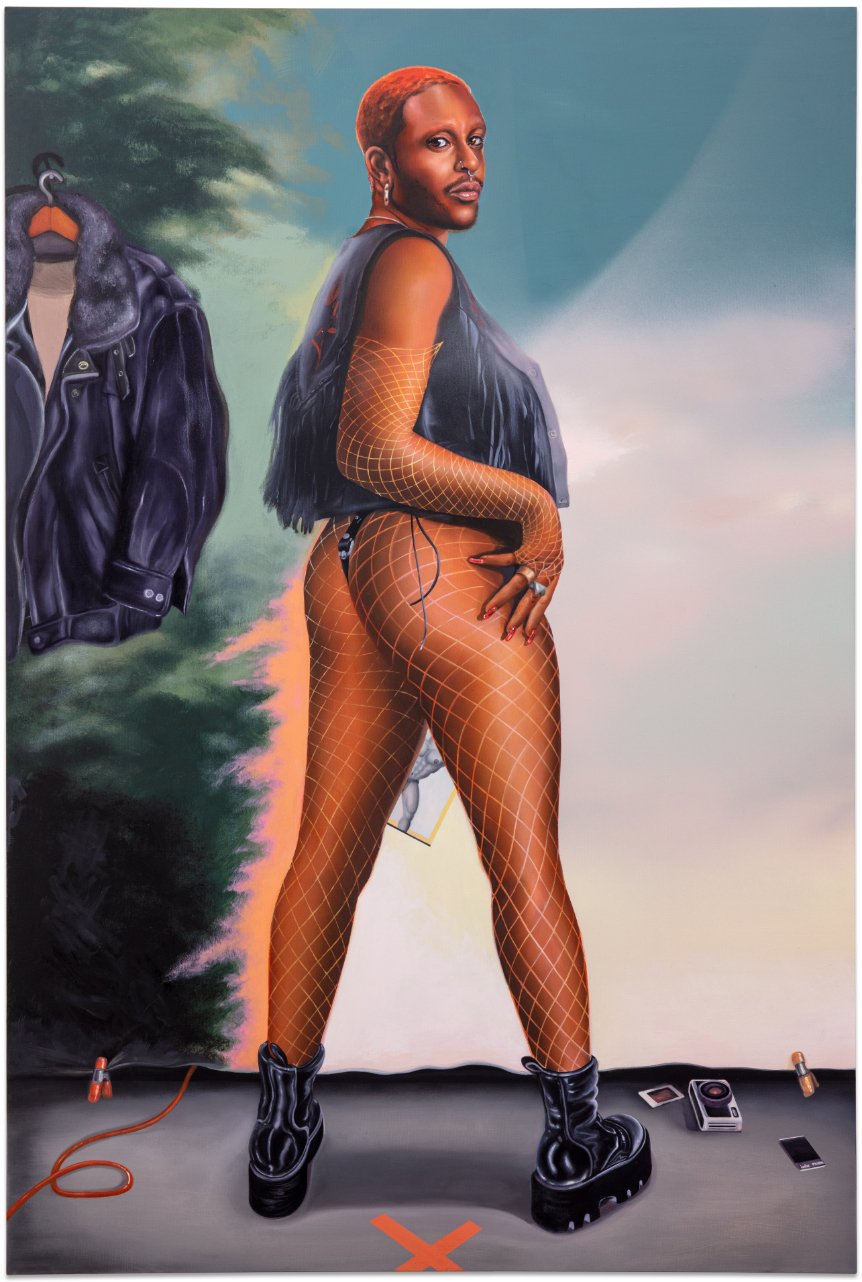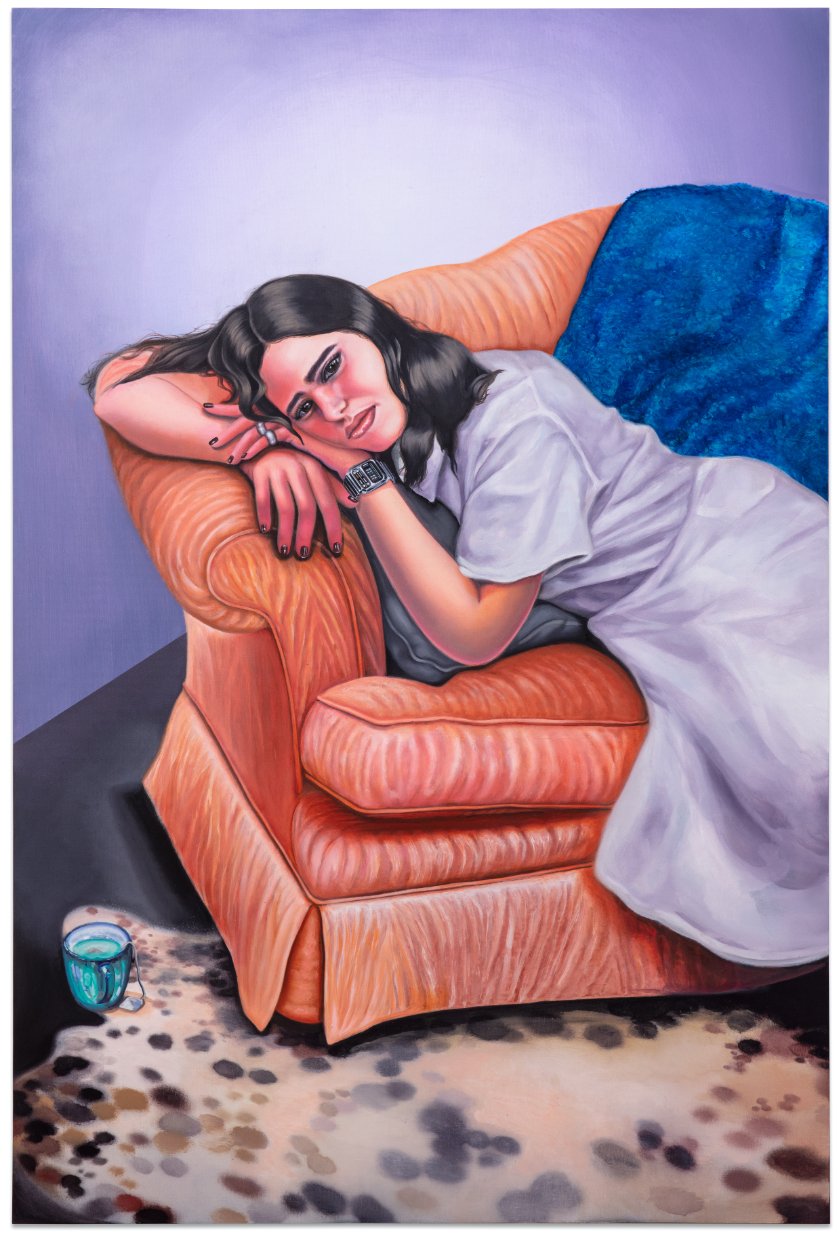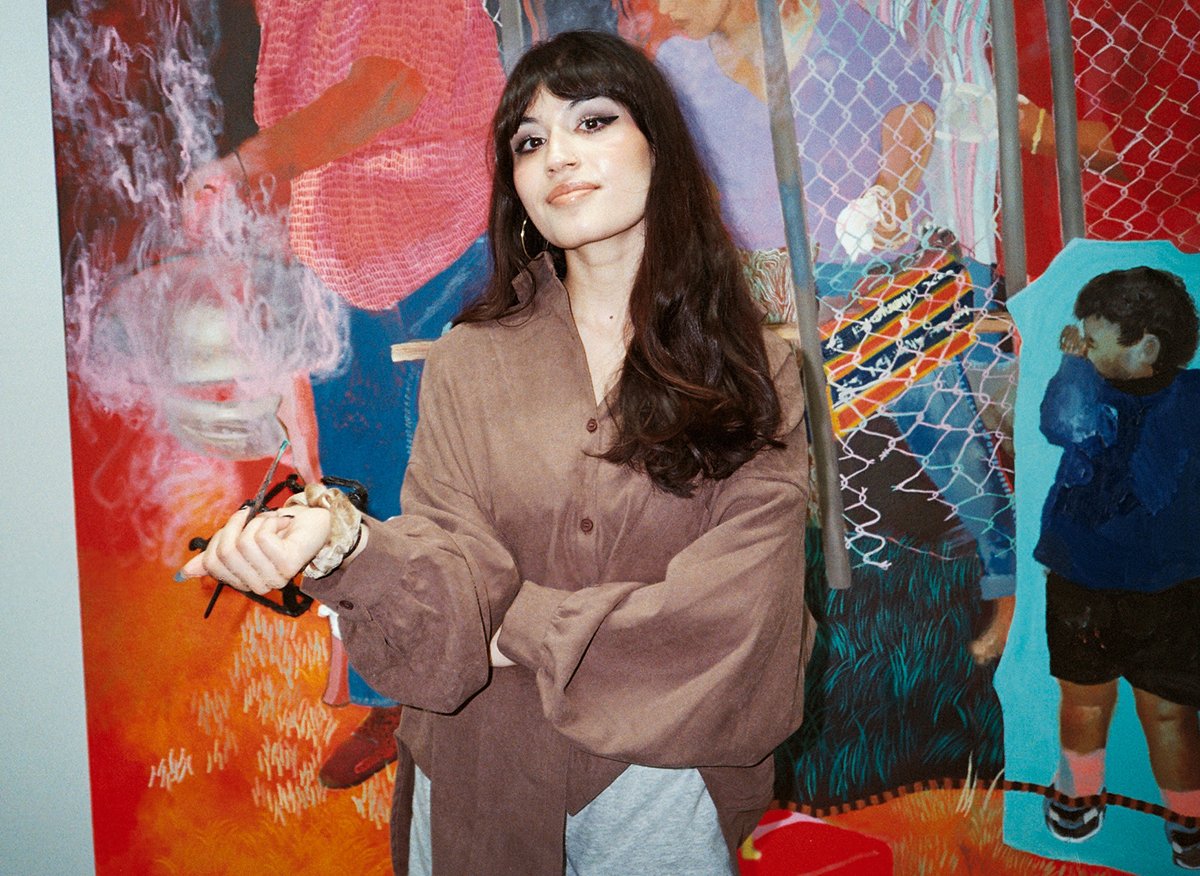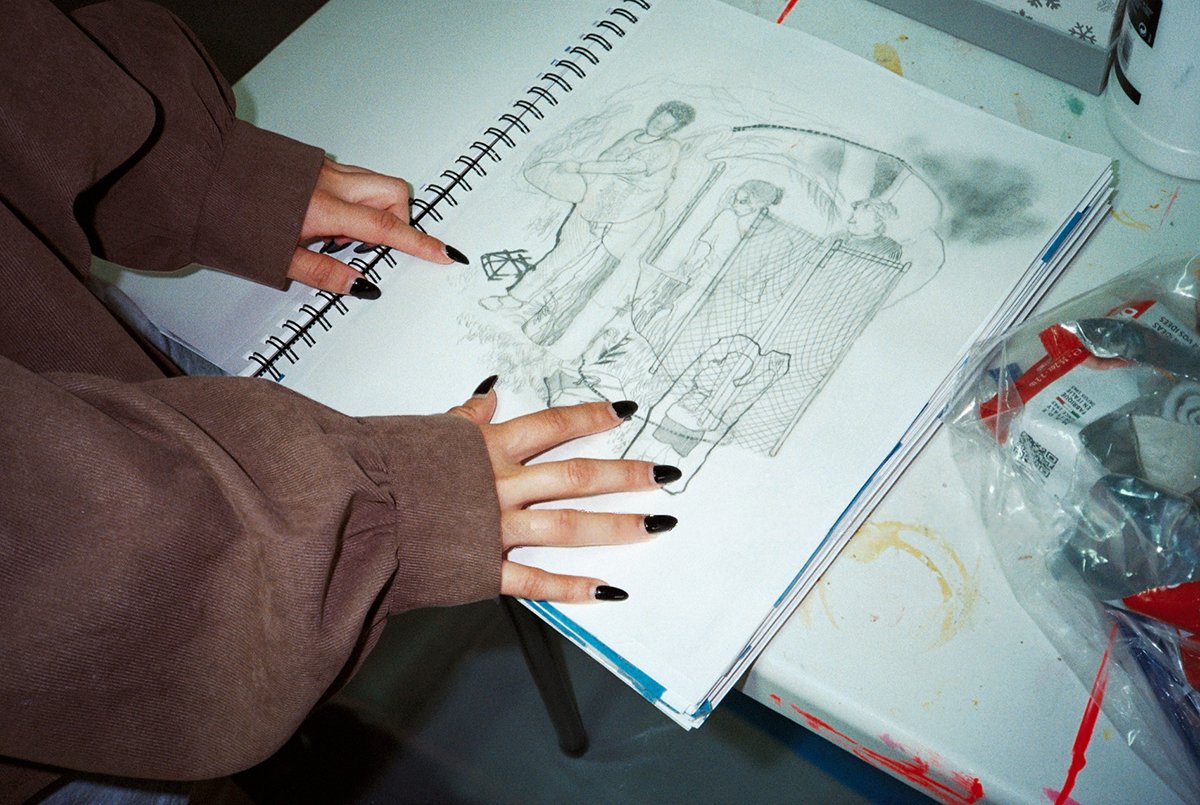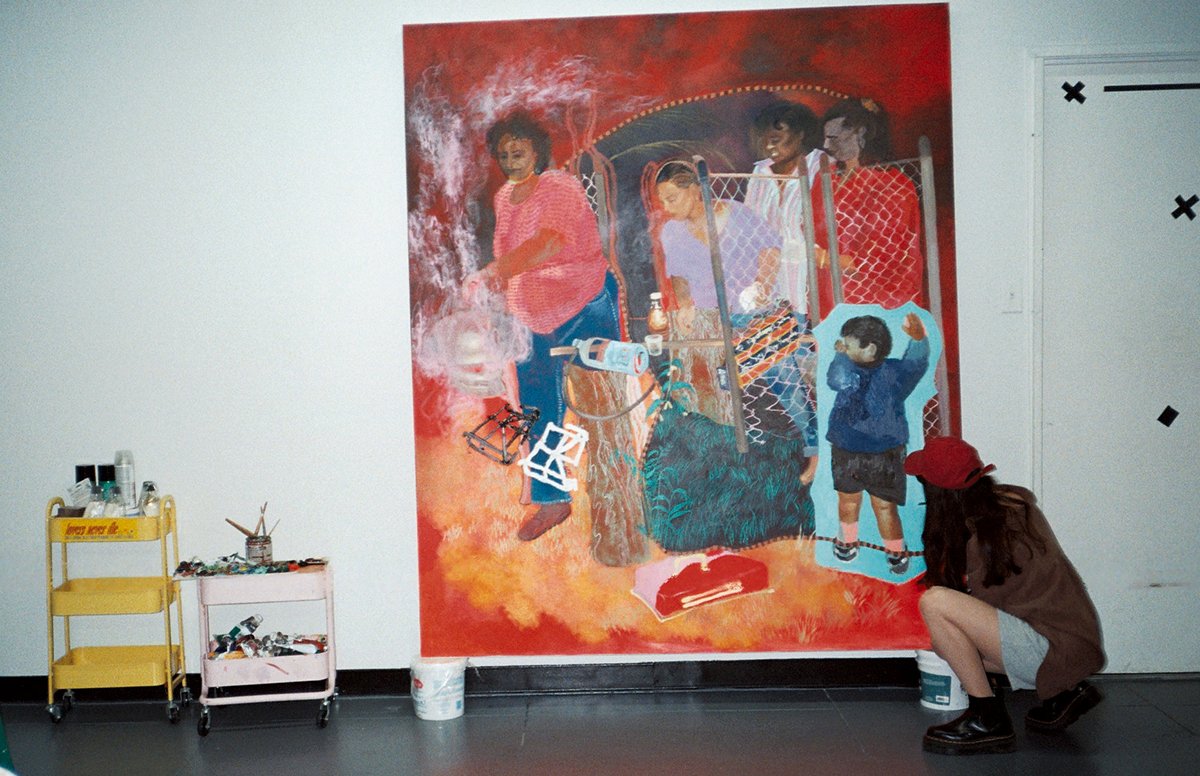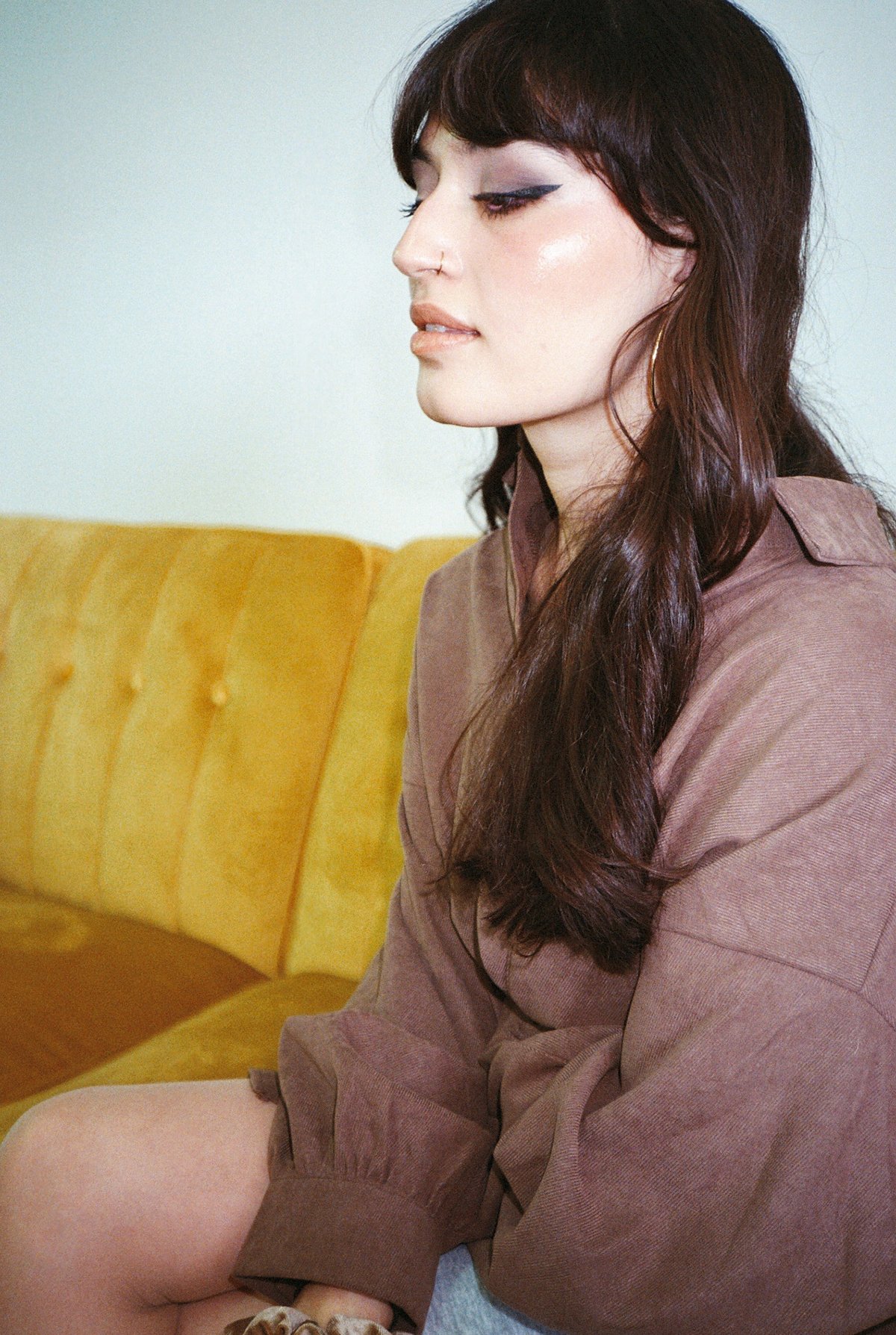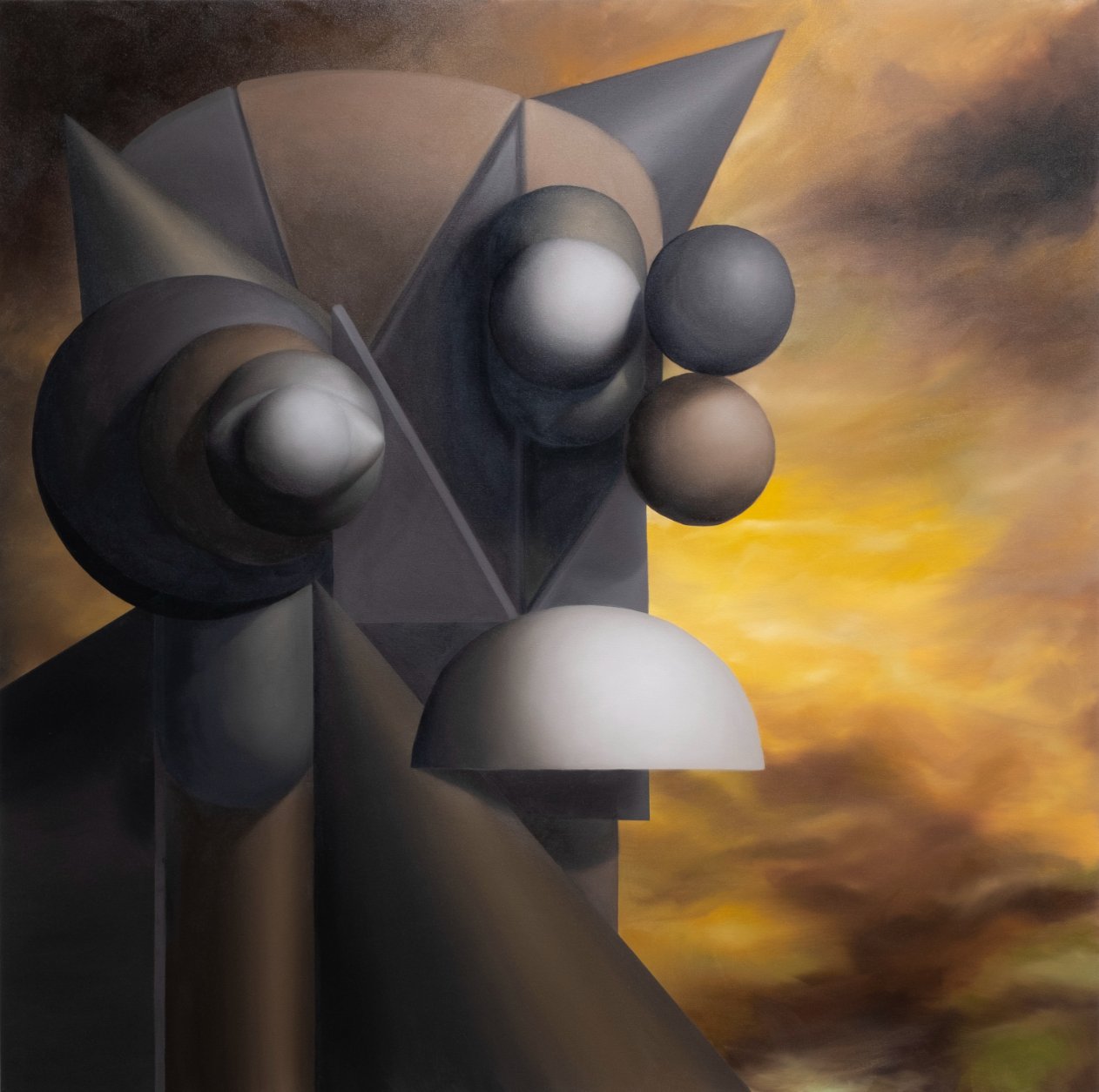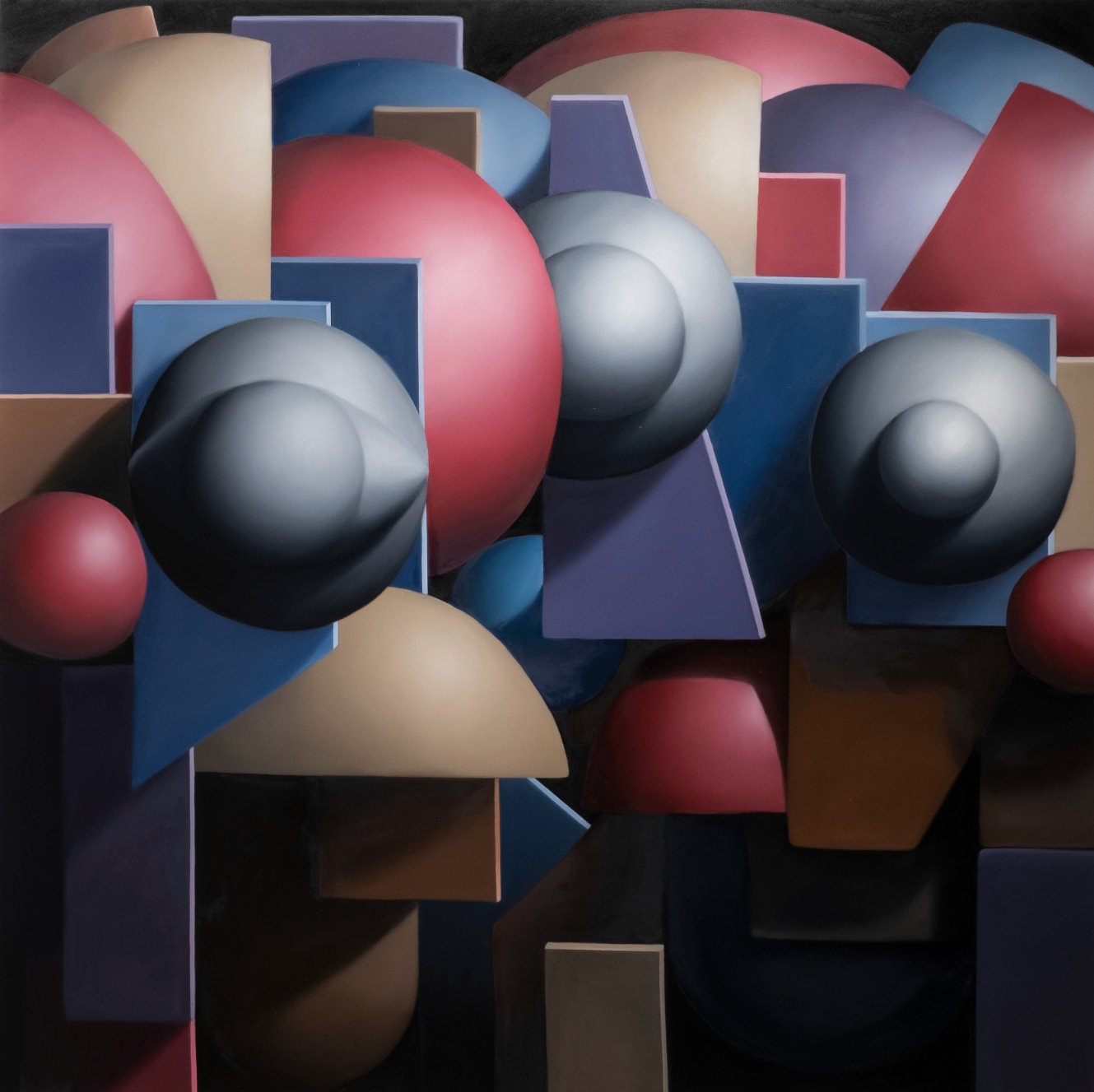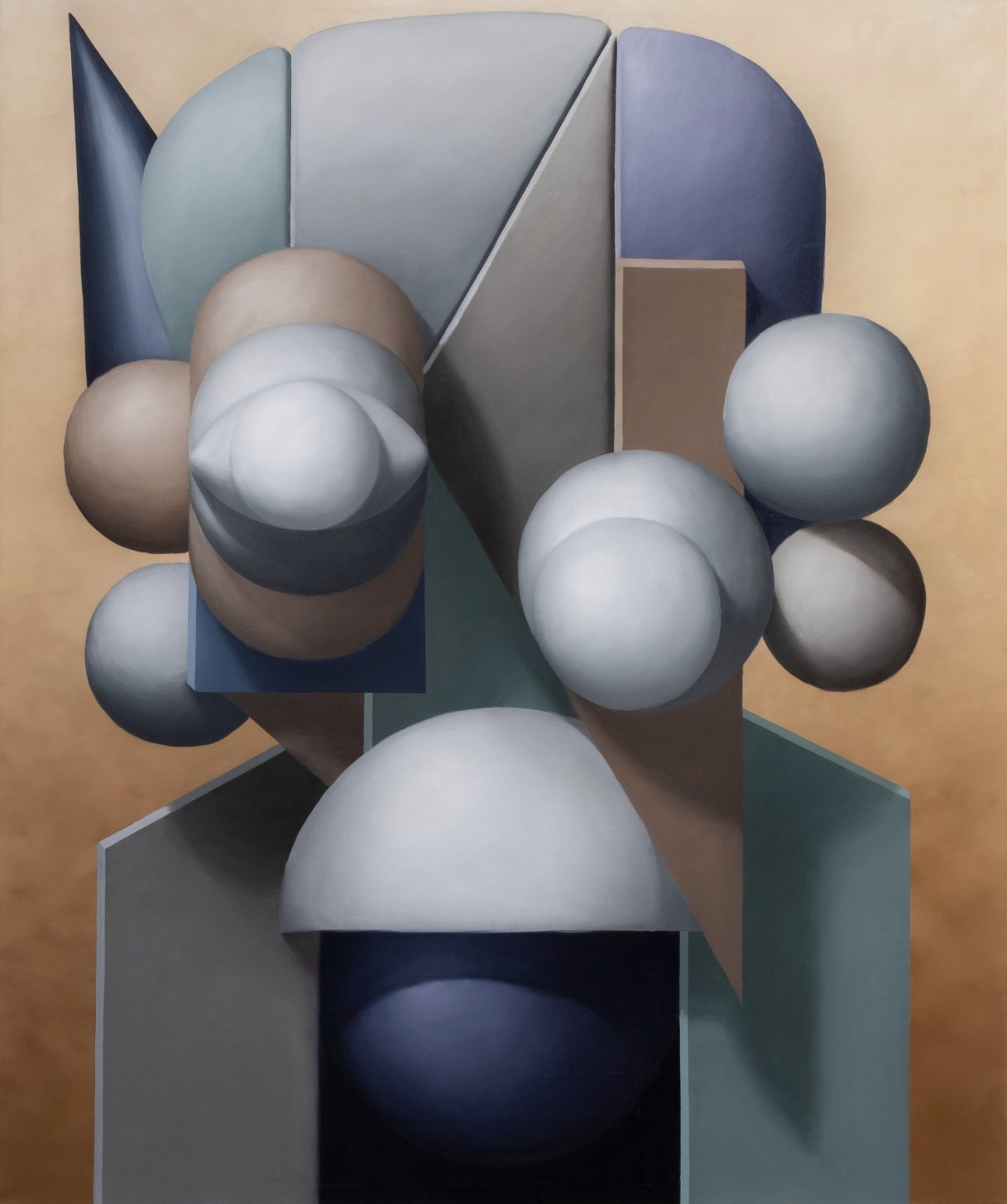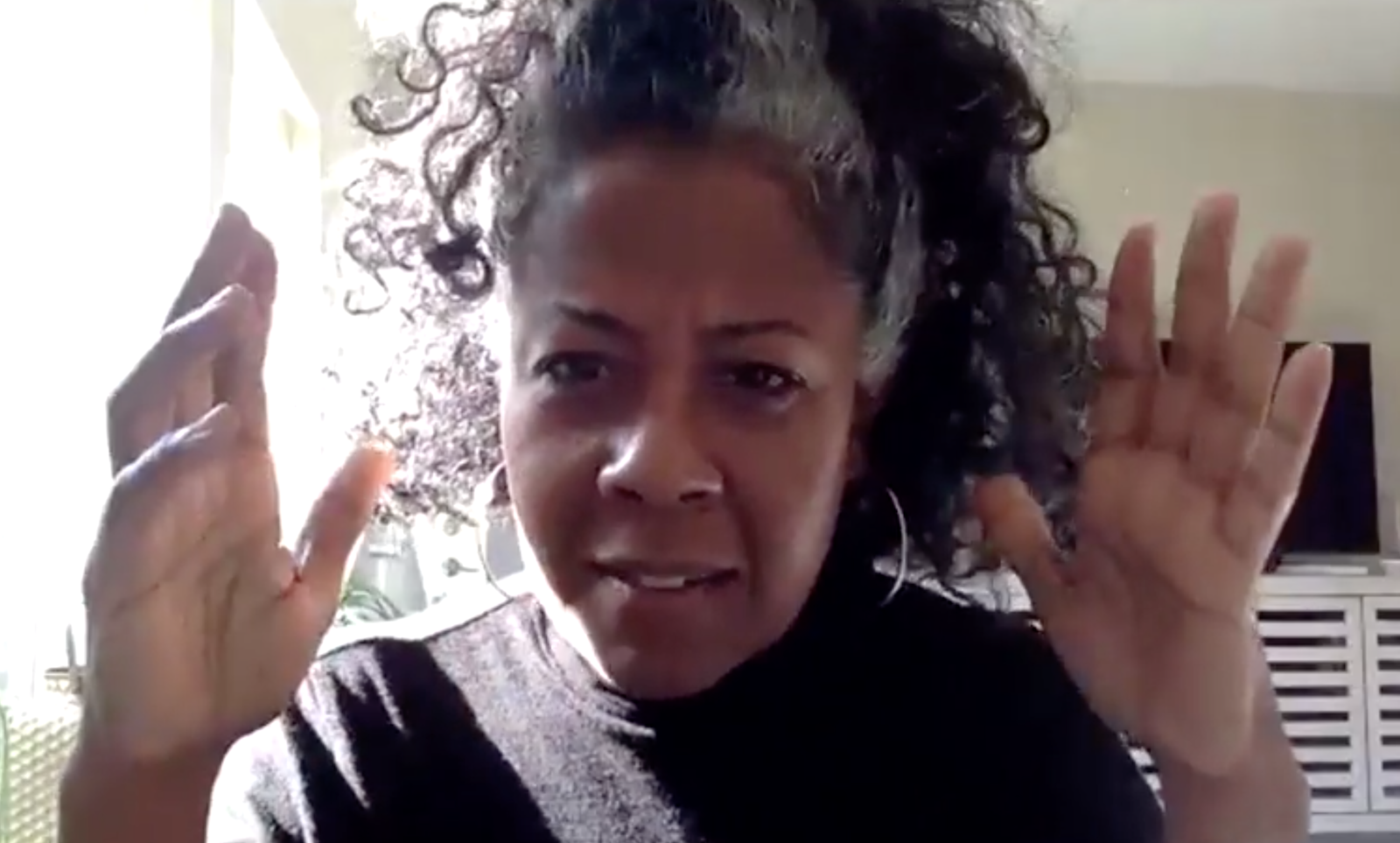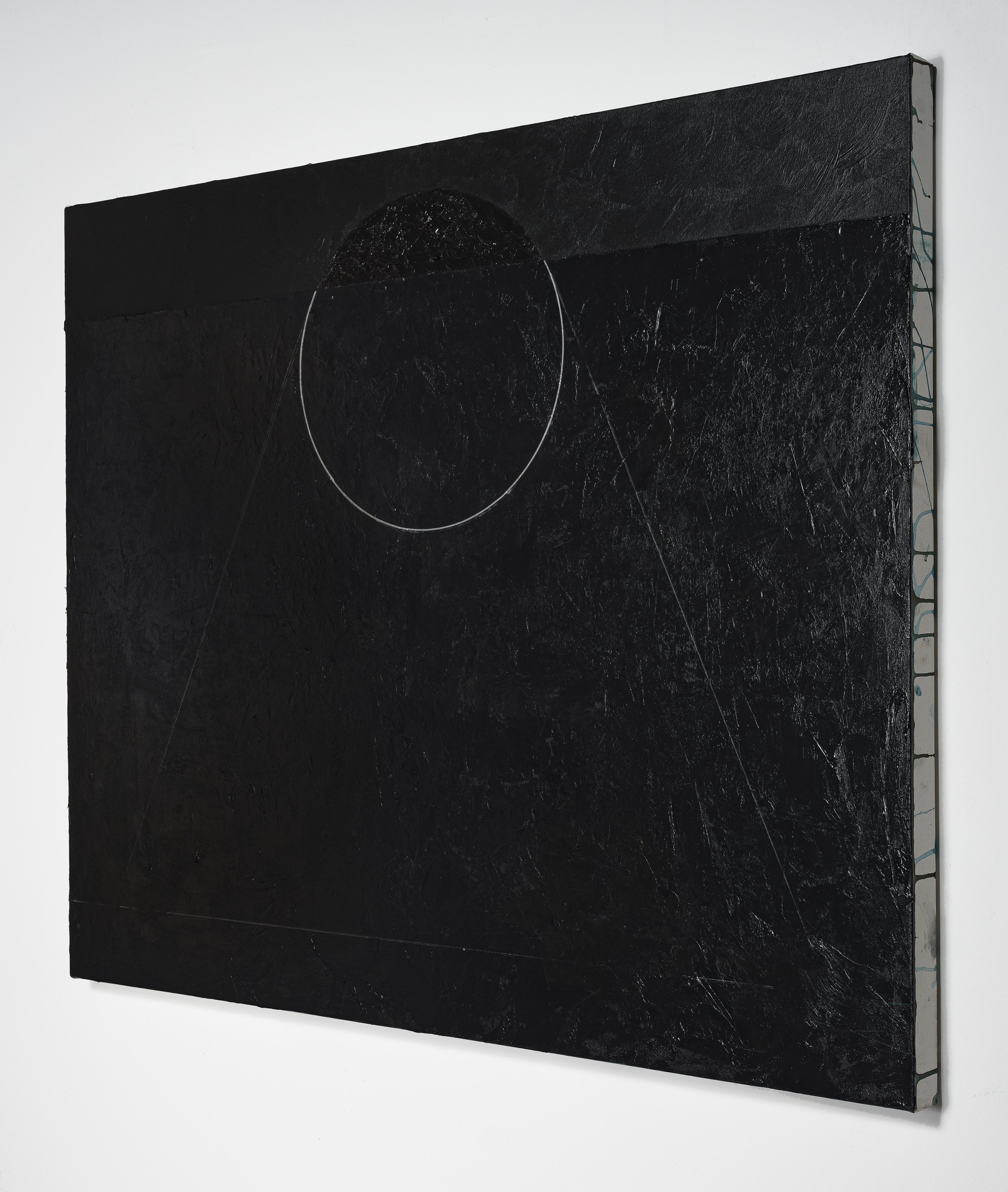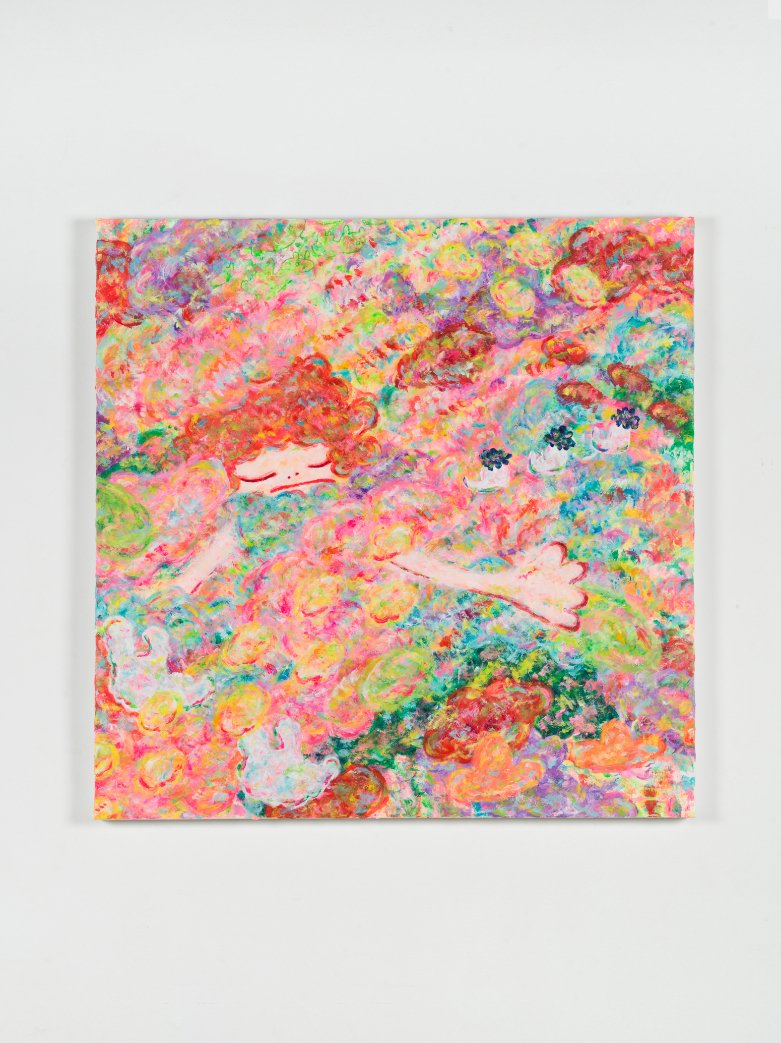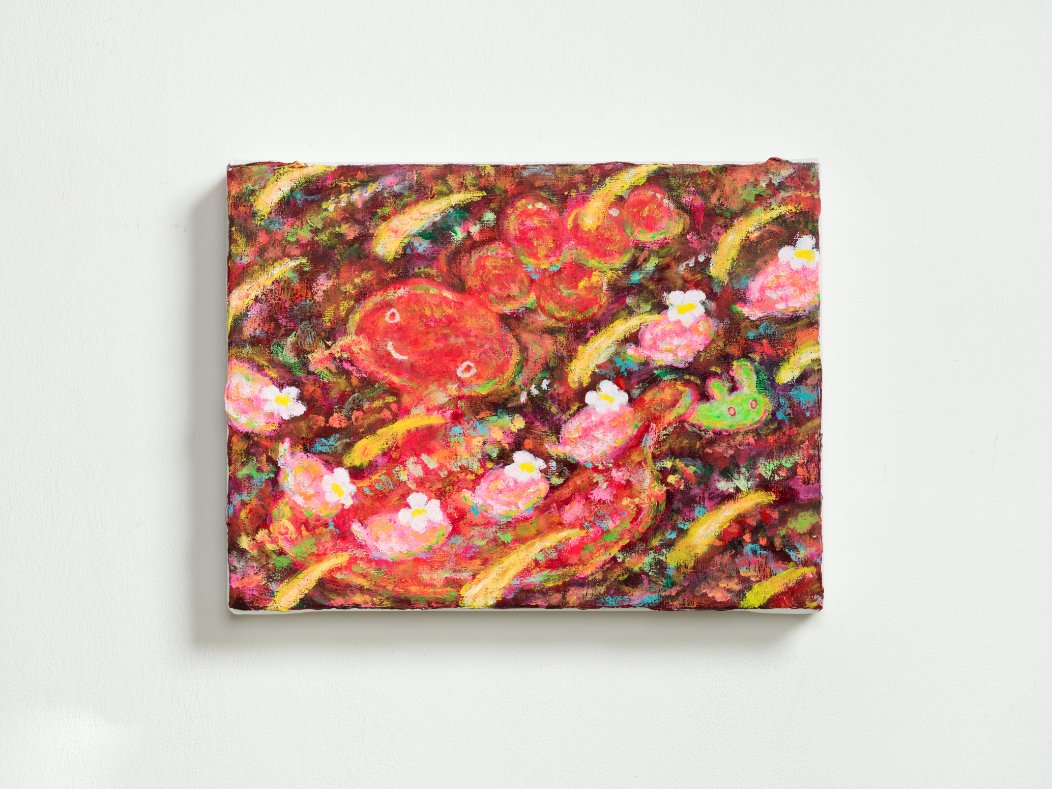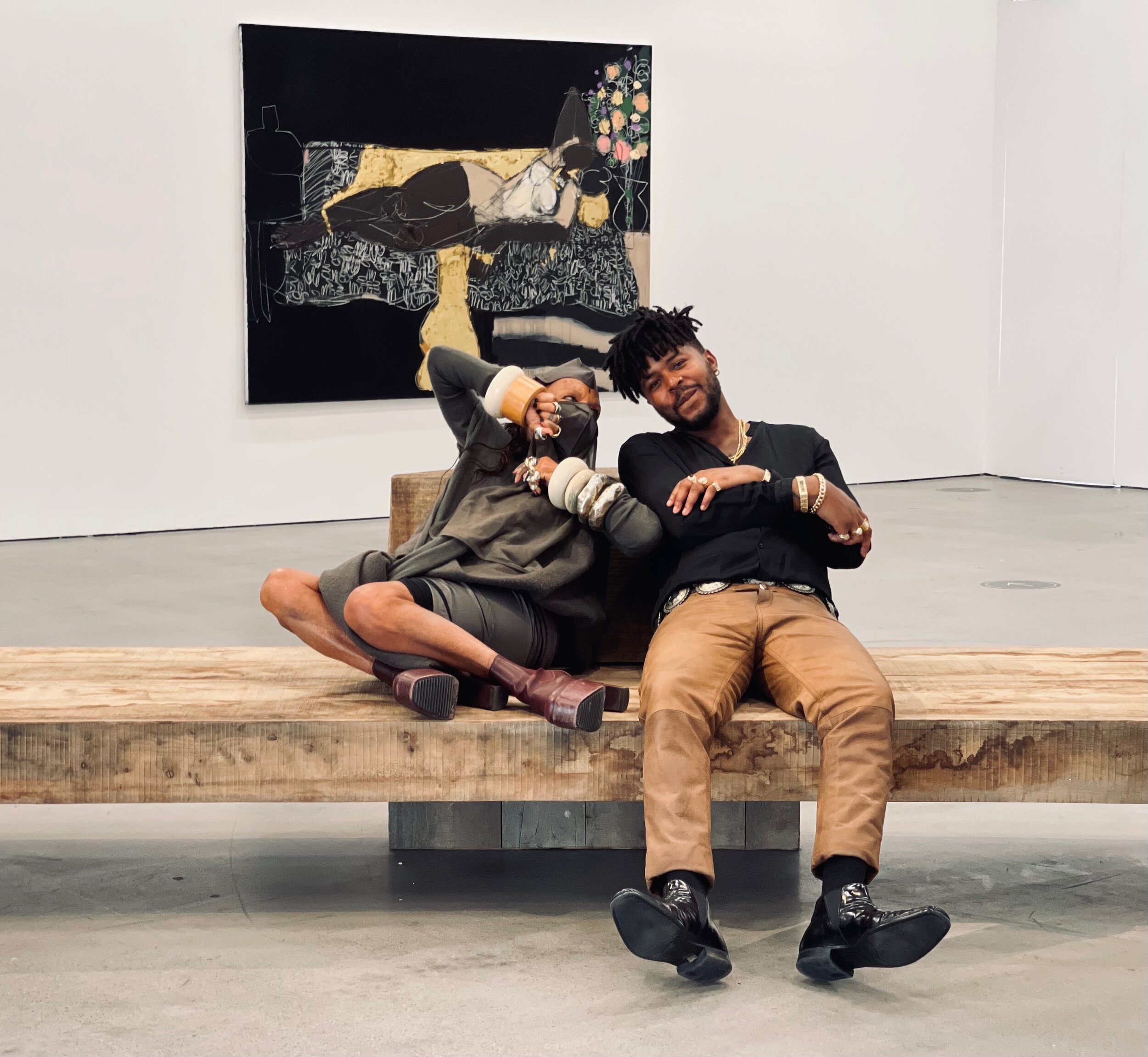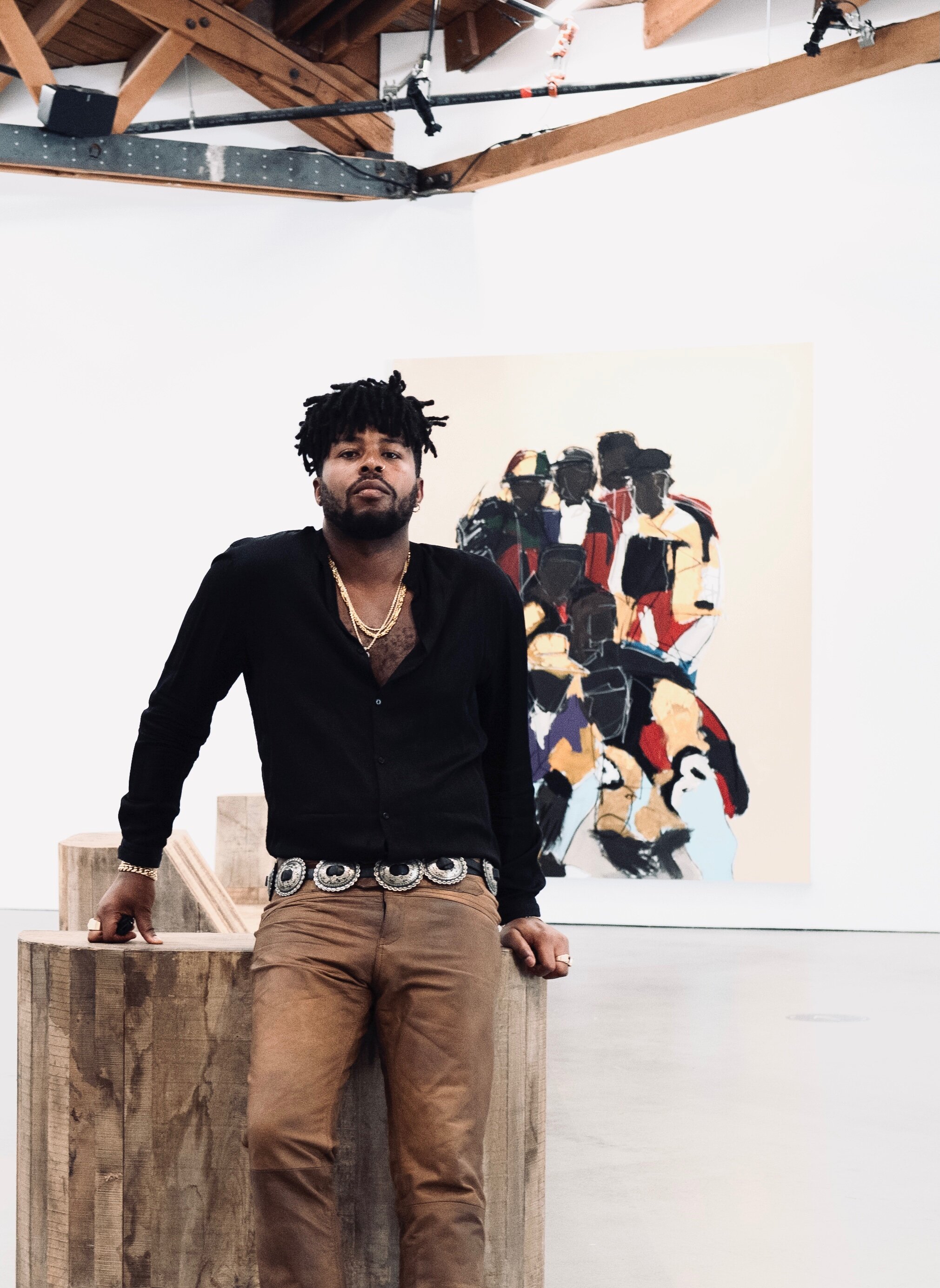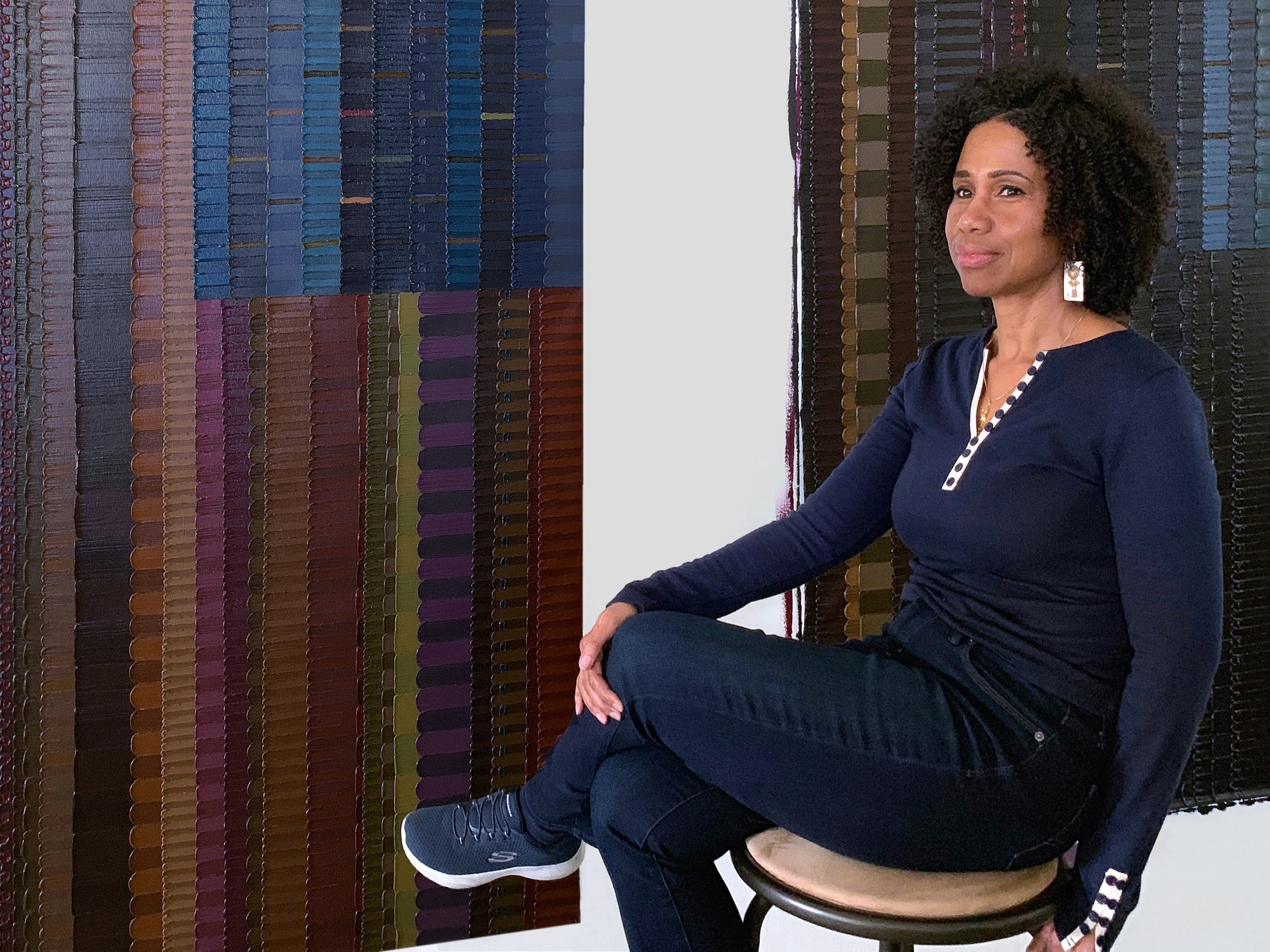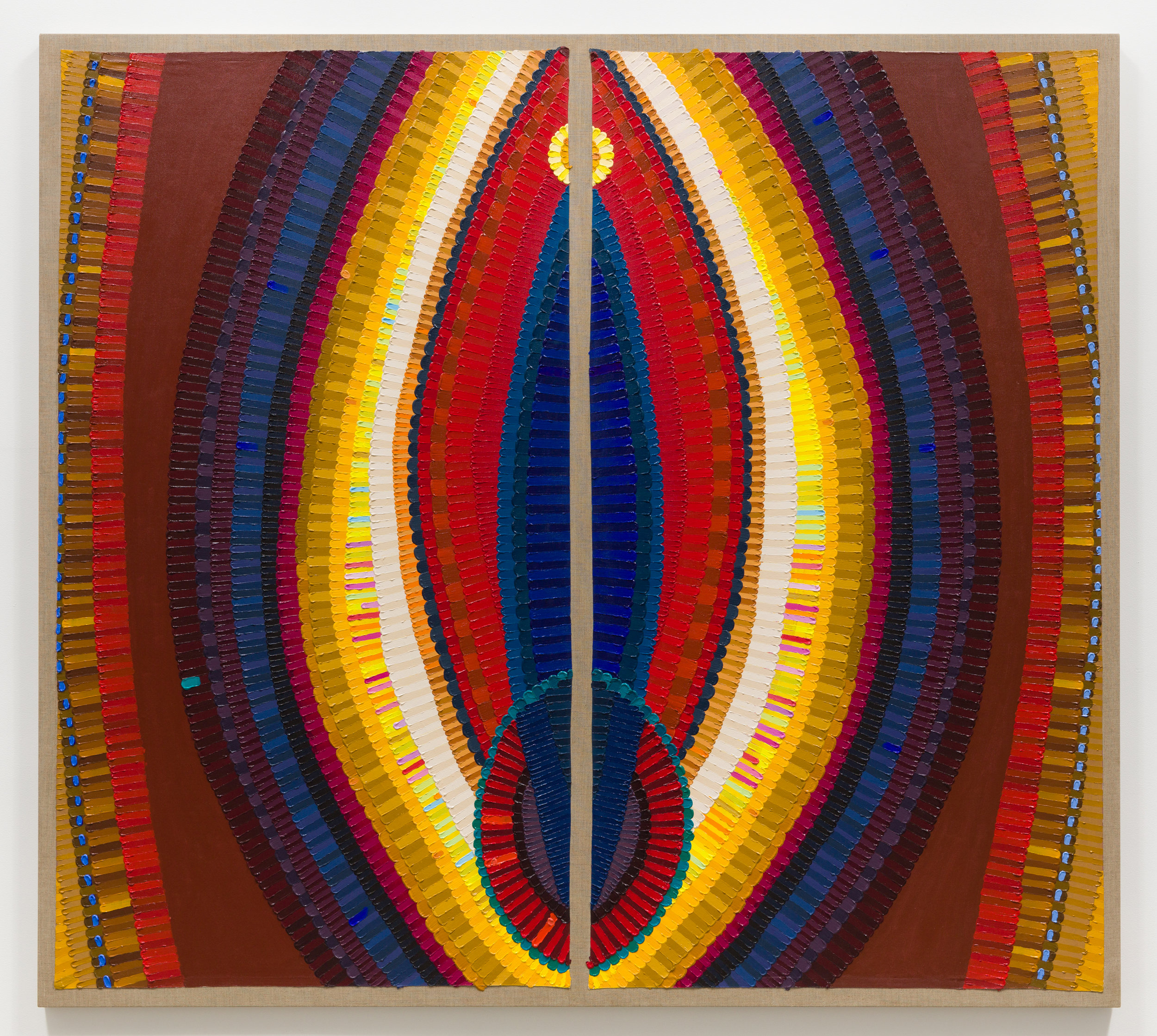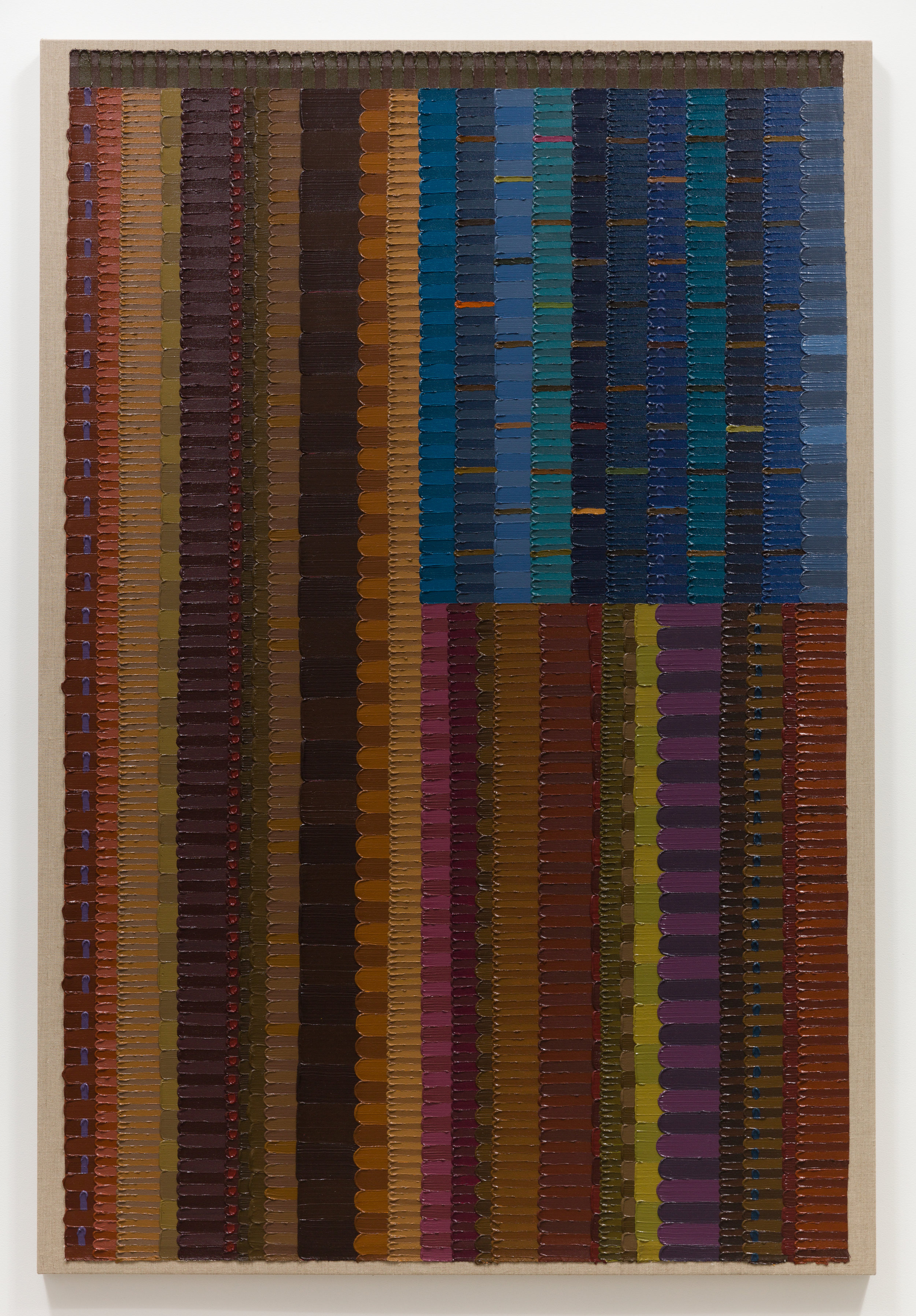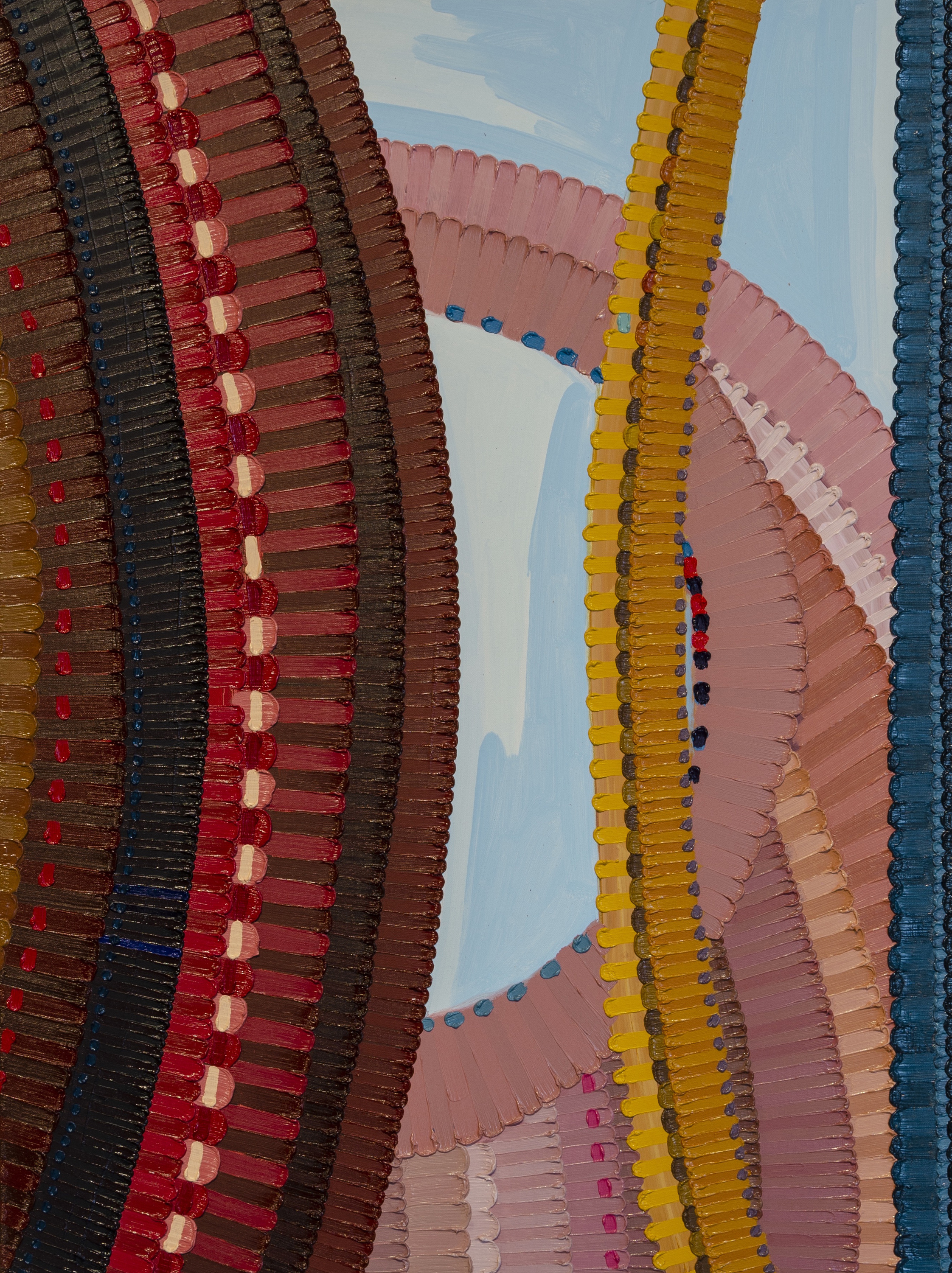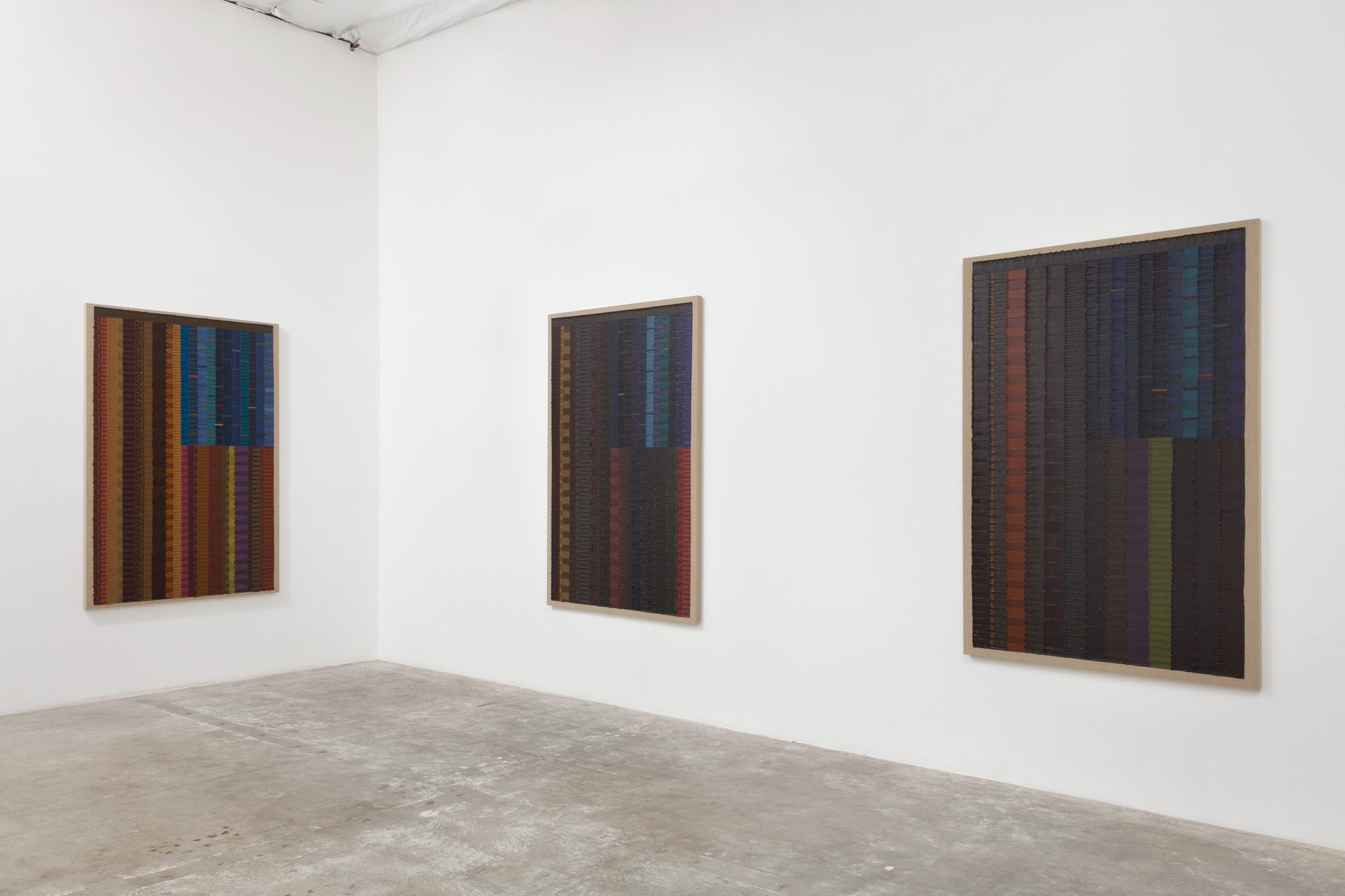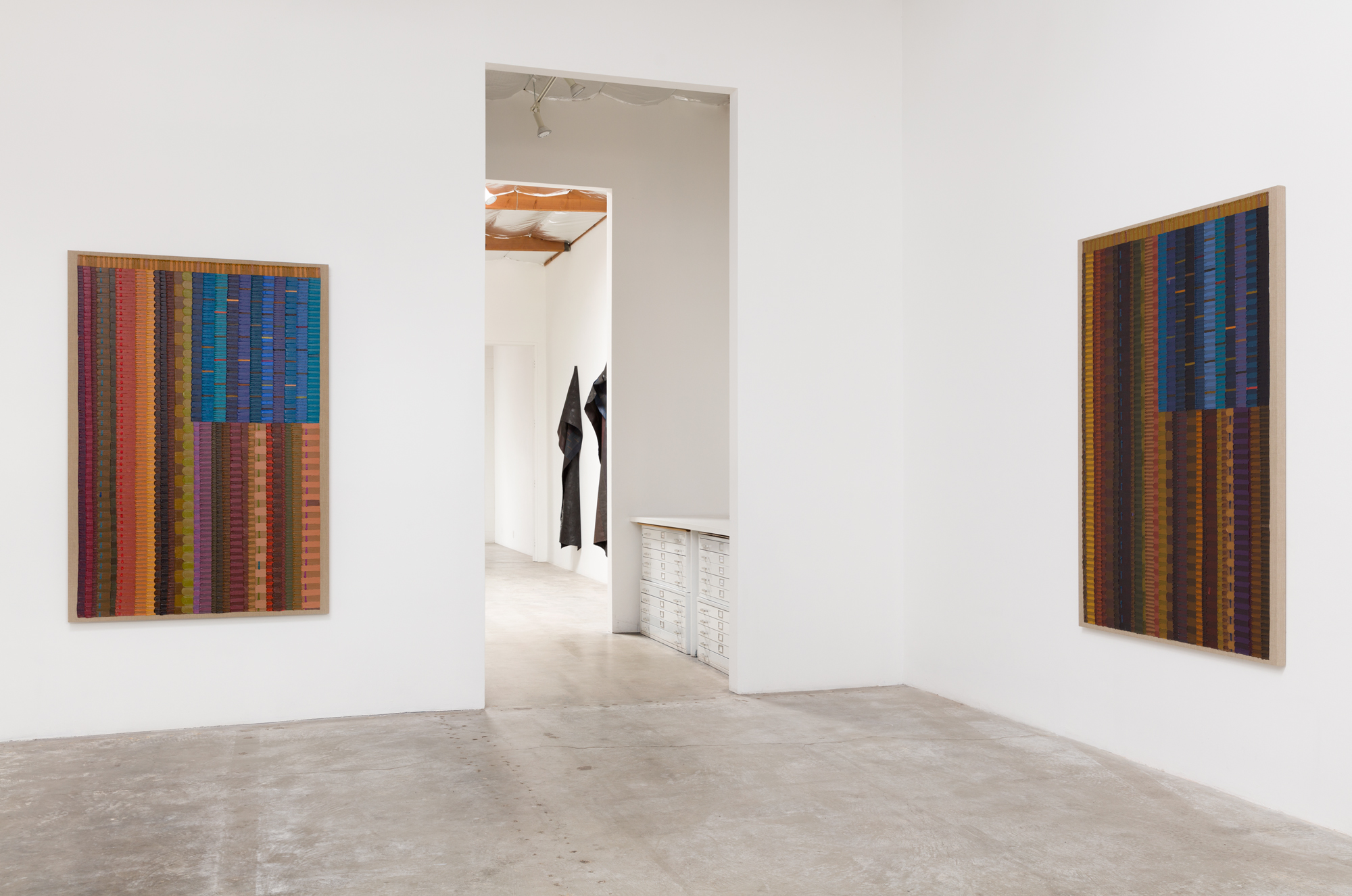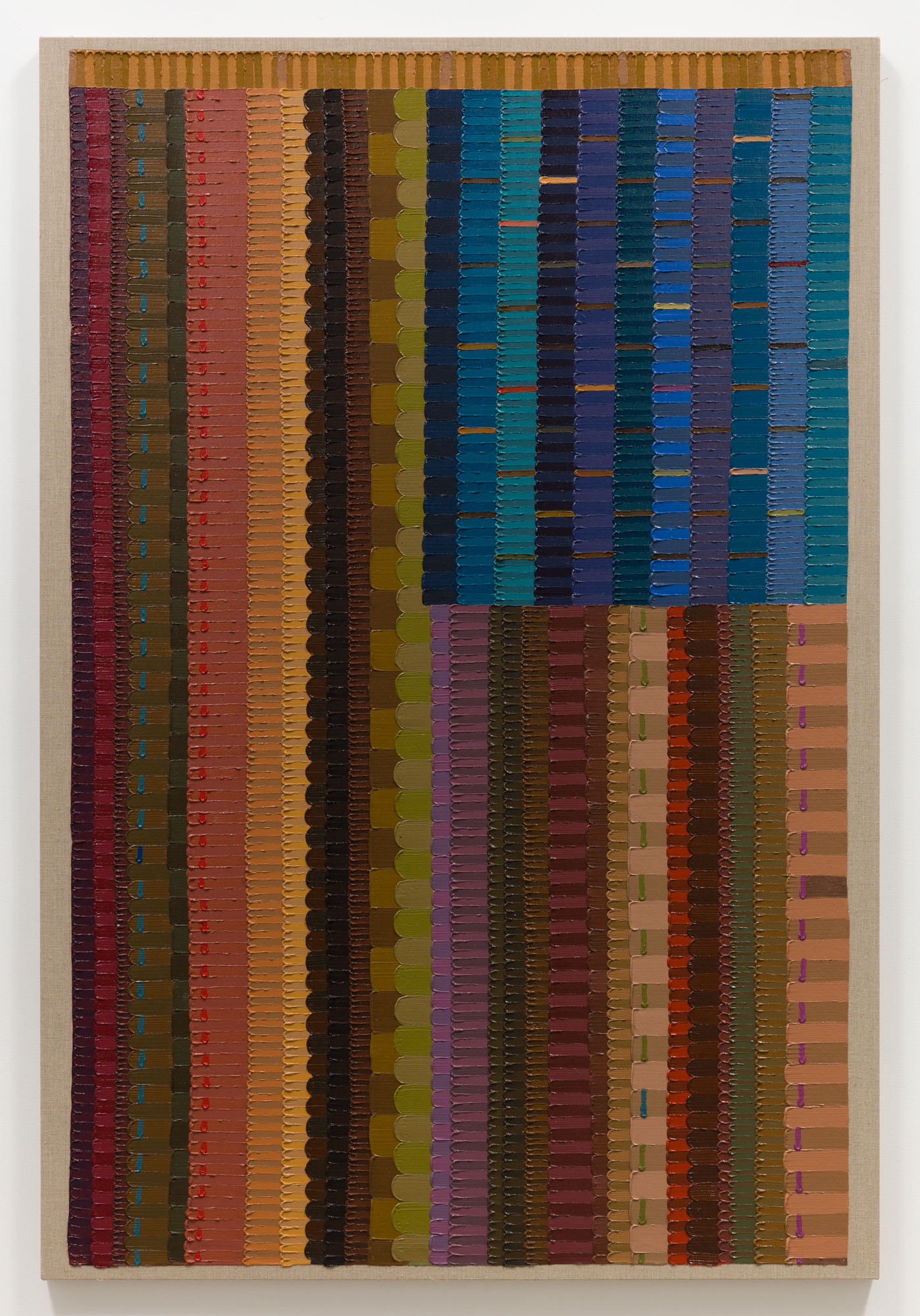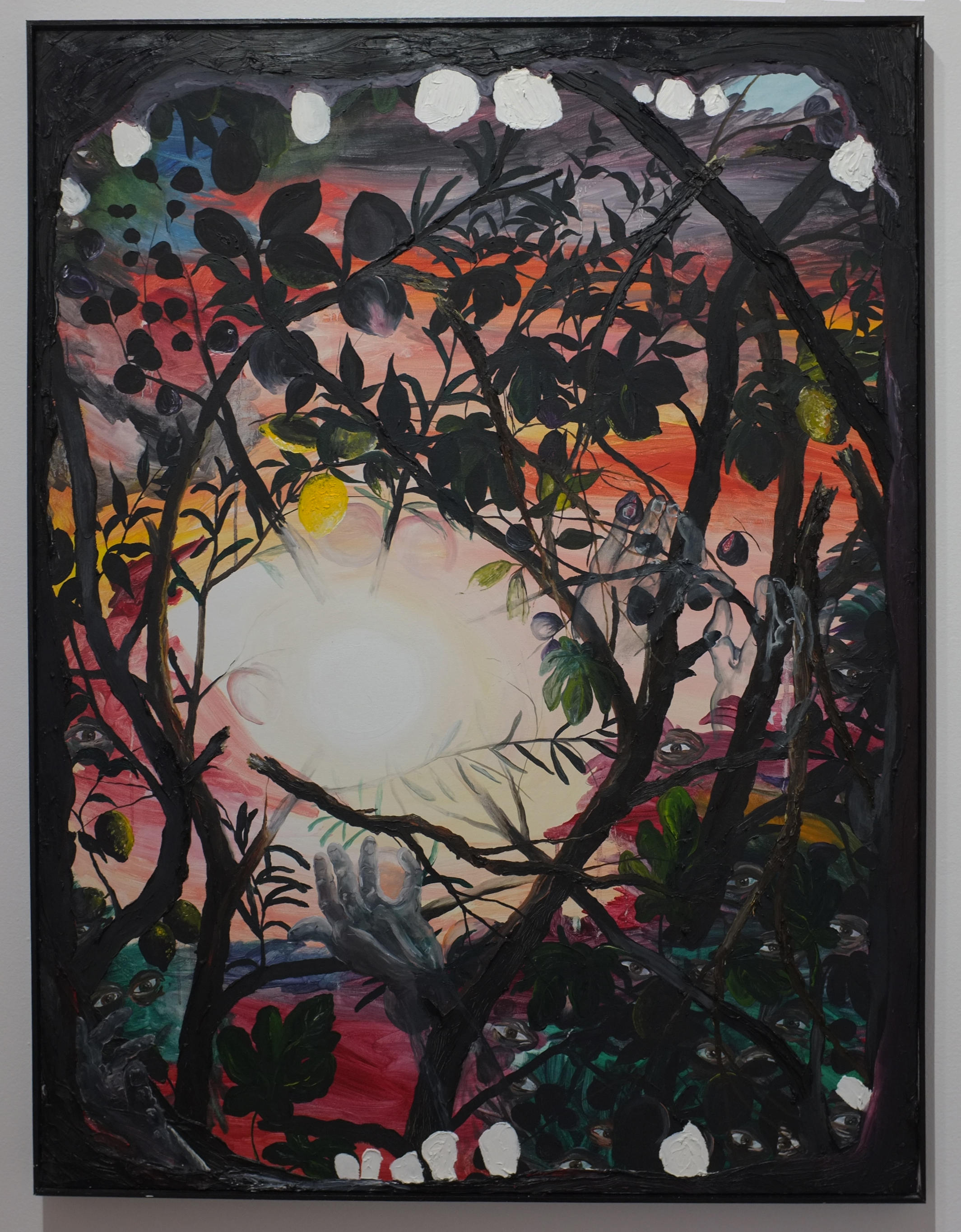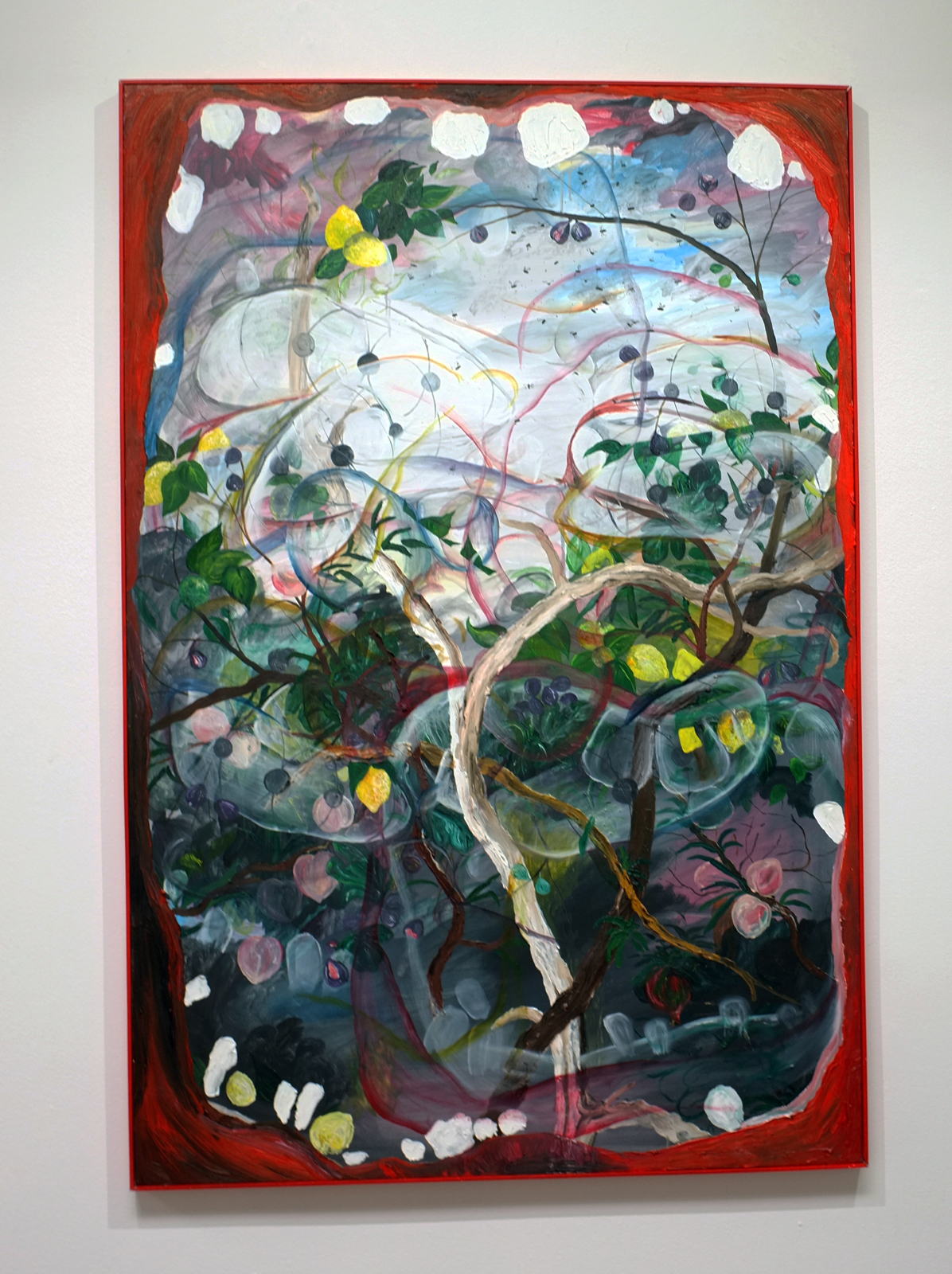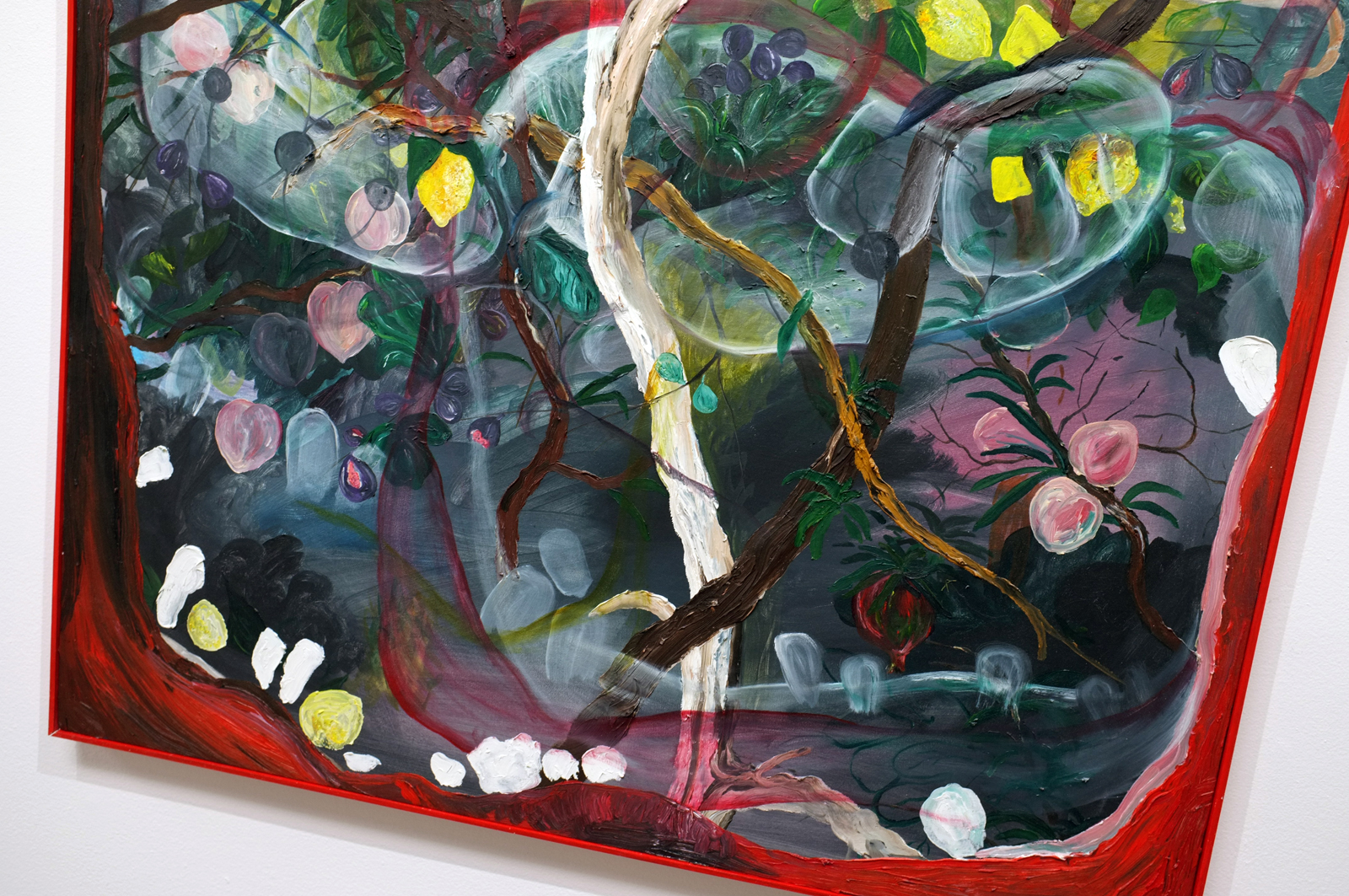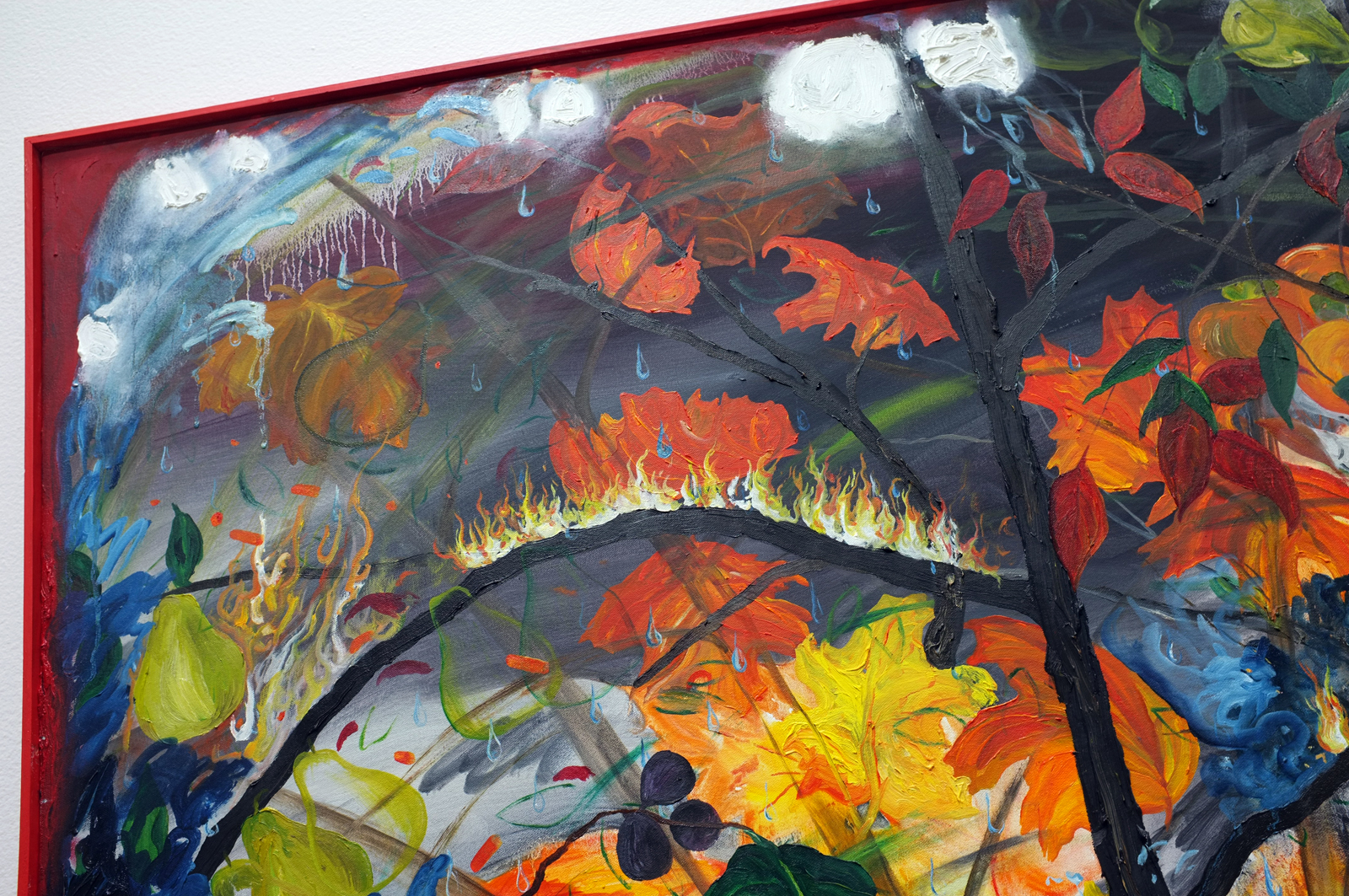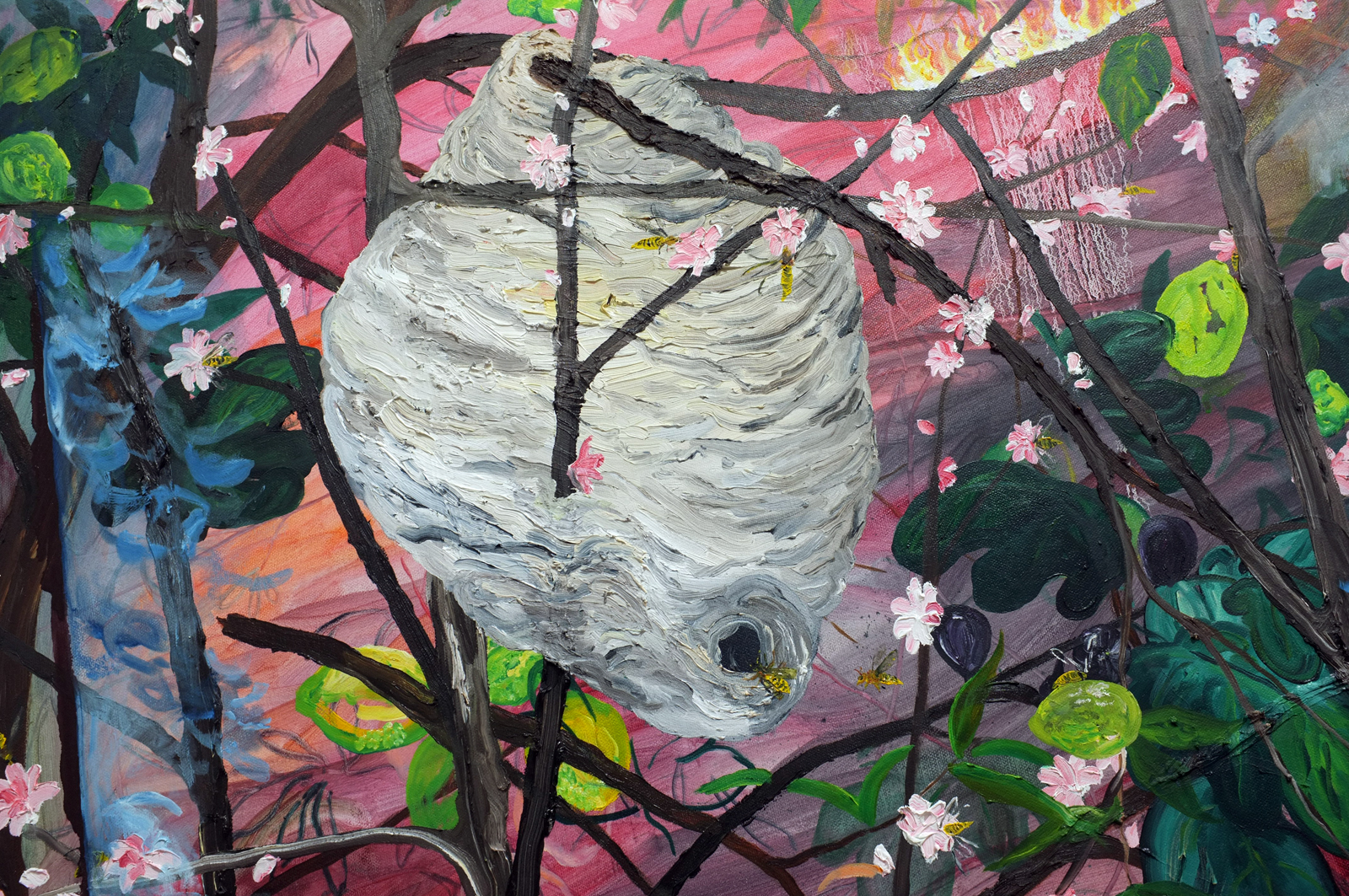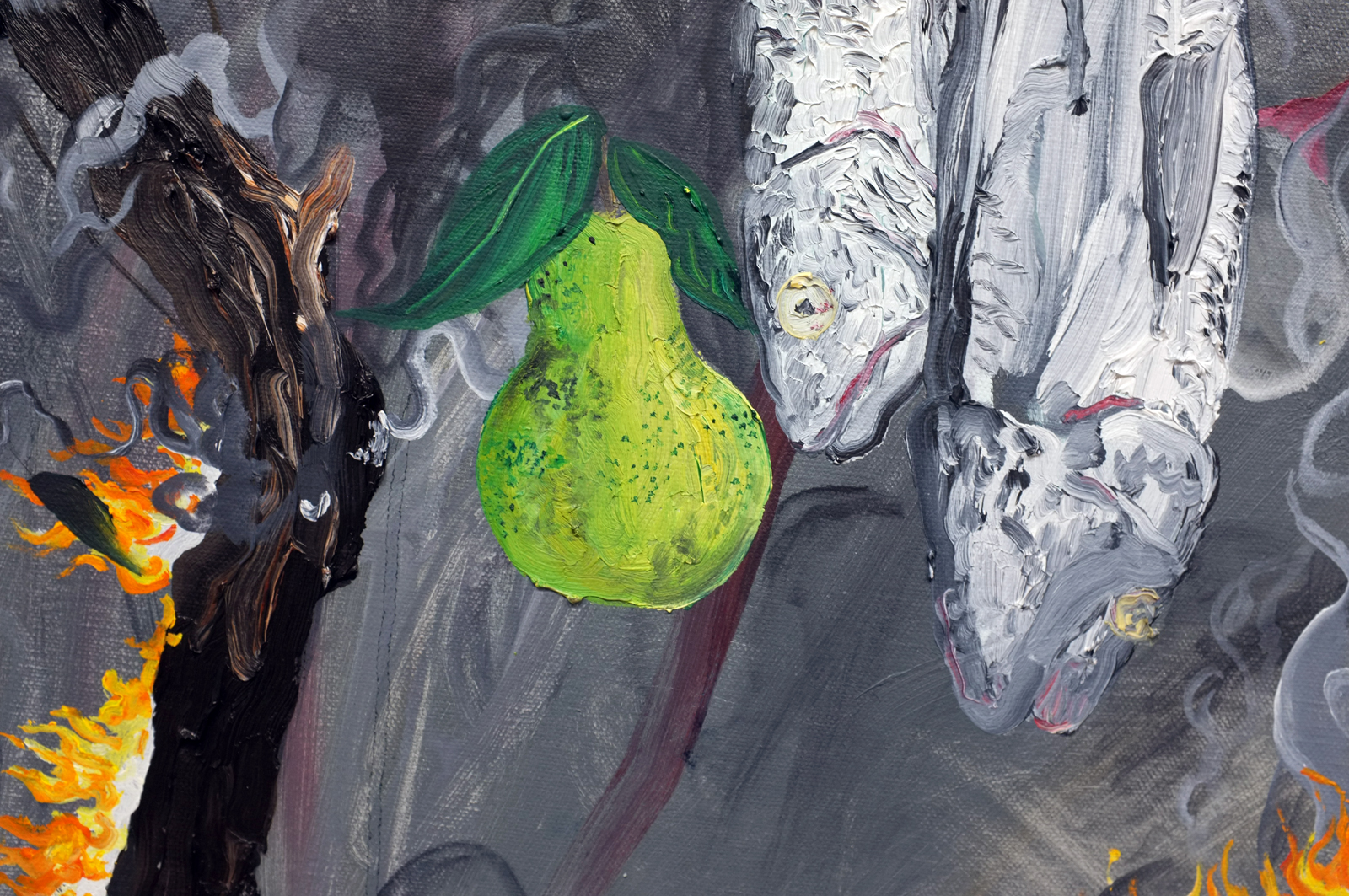The mutability of power and pleasure takes center stage in Charades @ SOCIÉTÉ, Berlin.
Marianna Simnett
Leda Was a Swan (production still), 2024.
Courtesy the Artist and Société, Berlin.
Photo/ Leander Ott
interview by Summer Bowie
How we present ourselves and what we aspire to project is in an everchanging relationship with those around us. It is a story we’re telling about ourselves, to ourselves. In Marianna Simnett’s Charades, her second solo exhibition with SOCIÉTÉ, the inherent masquerade of existing in a society is examined from the ancient allegories that undergird our collective worldview to the personal histories we replay in our minds. It is a power play where nothing is ever fixed. Undermining the very foundation of Greek mythology’s Leda and the Swan, she contends that the swan was never Zeus in disguise, it was actually just a hand puppet. The subject of the story thus shifts from that of rape to masturbation when the subjects of the story exchange their masks. Persistent obfuscation is an everpresent quality within the work. In this way, she is asking you to decide whether the charade is just a playful game amongst friends, or if it is indeed an act of mockery.
SUMMER BOWIE: Greek mythology has been a recurring theme in some of your most recent work. Is Leda Was a Swan the first piece that puts your work in dialogue with a mythology that dominates the art historical canon?
MARIANNA SIMNETT: In 2019, I made a sculptural work called Hyena and Swan in the Midst of Sexual Congress, which, less directly, was also preoccupied with flipping the same myth. In 2022, I revisited Athena and her inadvertent role in Marsyas’ demise. Titian did a painting of the Flaying of Marsyas, who was flayed because he challenged Zeus to a musical contest and failed to play the flute upside down.
I try to talk about these minor myths that don't get painted by people like Titian because they're either too female or too monstrous or too unimportant. So, yes, this is the first time I am confronting such a Top-of-the-Pops myth, and I’m not even trying to change its essence other than maybe reveal a blindspot.
BOWIE: The polymathic quality of your work seems to have been developing since early childhood. From drawing and painting to music, text, film, installation, and beyond. You even taught yourself to taxidermy roadkill for previous works. It’s clear that you resist categorization and pigeonholing, but is there also an insistence on the role of the artist’s hand in the process that prevents you from outsourcing aspects of the work, as other artists of your stature are often wont to do?
SIMNETT: I’ve always enjoyed being in direct contact with my output. There’s an integral back and forth dialogue between my thinking and making. However, I also don't fetishize the artist’s hands. There can be an overstated importance of ‘touch’, which leans into the glorified image of the artist as genius, which suffuses the work with auratic value and power. For me, it is precisely that sludgy, messy middle that excites me. It’s also dangerous for artists to bend to the incessant demands of the market. One would hope that art is not a party trick to be reproduced at anyone’s whim. It doesn't feel like a healthy response to just take orders and make more. On a larger scale, that’s eventually going to make you fall into a sinkhole. And I would not be proud of that work on my deathbed. (laughs)
Video Still
Marianna Simnett
Leda Was a Swan, 2024
Courtesy Marianna Simnett and Société, Berlin
BOWIE: You recently started working with AI in your practice. When did you first start using the medium and what initially sparked your interest in it?
SIMNETT: I started working with AI in 2021 with Blue Moon, which was about the story of Athena carving a flute from a deer bone. I am attracted by antiquated tales and how they still resonate with what’s happening today. I’ve now produced a series of myths using machine learning, which explore our own relationship to AI and its infiltration upon our lives. Using it was a way of becoming friends with this ‘other.’
The way I approached it was not trying to be too clever. I don’t call myself an AI artist, it’s just yet another tool in the box. Everyone is undeniably already using it even if they are not aware.
BOWIE: It is starting to integrate very seamlessly into everything we do. At this point it’s only a question of how we want to use it.
SIMNETT: It’s a reflection of us. I think we perversely fantasize being destroyed by machinery. But at the end of the day, we are the ones making the models, and we have the chance to invent weird and wild experiences. In Leda, I don’t rely on text prompts and shoot all my own datasets from scratch. It’s a deliberately closed palette that I’m working with.
BOWIE: How did you go about setting up the AI model for Leda? I don’t know if that’s getting too far into the weeds…
SIMNETT: I mean, no. Well, that’s funny because there are weeds in the film and they represent Leda’s orgasm. (laughs) I wanted to reveal that Leda was always the swan. Her hand is the swan’s beak and she’s masturbating. It’s a tale of violence turned into pleasure. I worked with AI artist Arash Akbari, DoP Leander Ott, and Producer Henry Eigenheer. We set up the model by filming data sets of me performing in front of a makeshift set modeled upon a fresco of Leda and the Swan discovered in Pompeii in 2018. Every sequence was filmed about fifteen times so that we had a vast number of images to feed the model, and then it would regurgitate badly reconstructed video sequences, which I used as film editing material the same way that I would make an analog film. I was simply given new material by the AI based on what I fed it, which produced this interesting confusion.
Video Still
Marianna Simnett
Leda Was a Swan, 2024
Courtesy Marianna Simnett and Société, Berlin
BOWIE: That feels like a very genuine collaboration with the medium rather than a basic outsourcing of the tedious, or even creative, parts of the work. You’re actually creating more tedium for yourself.
SIMNETT: Right. It’s precisely the opposite. Much more tedium. It’s also boring because I don’t even get to perform in the way that you might on a theater stage. It doesn’t care about talent. It just wants the goods. I was trying to do very dynamic, generous movements for the camera, so that it would have enough to chew on. But it doesn’t read subtle facial expressions. These just get blurred. So, it was really about gesture, movement, tableaux, mise en scène, lighting, props; all the basic elements.
BOWIE: This exhibition is very concerned with the fluid boundaries between individual and collective behavior. You also live and work between New York and Berlin, two cultural capitals that are currently in a state of ideological crisis. What role, if any, has the current political landscape played in the conceptual framework of Charades?
SIMNETT: I hope that people will feel the undercurrents even if I never land directly on the nose. But I can’t help but imbue the work with an omnipresent feeling or that deep, rumbling state of the Earth right now where there is so much collective feeling and pain. It’s alluded to, but not directly stated. There is something implausible about the multiple realities that we are forced to live with today. And the flooding of painful disasters whilst the chirpiness of another conversation is going on at the same time. The collision of some of these worlds is almost unbearable.
BOWIE: Do you feel as though our individual behaviors are getting lost in the collective behavior—that we’re losing track of our sense of internal motivation in our pursuit of the status quo?
SIMNETT: Yes. I think we’re being puppeteered by dopamine and addiction, and our brains are becoming less capable of individual thought. We’re being retrained to find quick, shorthand ways of responding to nuanced situations that then inevitably recondition our minds.
BOWIE: Charades is also rooted in notions of masquerade. You employ humor in your sculptural work with objects like the merkin to address historical examples of what we expose about ourselves in the act of hiding. Would you say this is a timeless phenomenon, or is the performativity of everyday life an evolving process?
SIMNETT: I’m with Judith Butler on the notion that the construction of identity is through performance, as opposed to there being any preexisting original ‘I.’ It’s malleable and mutable and unfixed. So, yes I think that’s timeless. I instinctively occupy many bodies, and I’ve done so since way before the internet became such a big part of our lives. I have multiple names, multiple personas—that is just how I have always lived and felt most comfortable in my skin. I think it’s innate.
Marianna Simnett
Caked, 2025
Oil on canvas
200 x 150 cm.
Courtesy of the artist and SOCIÉTÉ, Berlin
BOWIE: Can you talk about the mutability of power and how it’s addressed in some of the sculptural works?
SIMNETT: Power and idolatry are addressed through the choice of subverting or remaking what is commonly known as a reliquary, which is an object formally used to house the remains of saints after their death. There are some really fascinating ones encasing jaws and teeth, or lockets of hair, or bones, or ash; very macabre morbid objects. Often the remains of these bodies are not seen. They’re just implied to be inside. But the objects themselves are very ornate and bejeweled. In the Medieval era, they were thought to be much more than just objects, they were a powerful connection to the divine. For Charades, I have created my own twisted version of the reliquary.
There is a bronze bust with a nipple extracting milk made of pearl, an arm dressing as a wedding cake, a foot wearing a horse shoe. So, I am pointing to this ancient tradition of worship using classical materials in all the wrong ways.
BOWIE: There’s a wonderful inversion happening with the beautiful object that’s meant to hold the macabre turned into the macabre object that’s meant to represent something sacrosanct.
SIMNETT: Exactly. And then there’s the merkin box. There’s a presentation of six merkins that we have produced out of human hair, and they are also presented in a treasure box with cast bronze masquerade apparatuses in there, like combs and brushes and eyelashes and mirrors.
BOWIE: We just wrapped our Desire issue where we also thoroughly explored Lacan’s theory of the Other as it relates to desire and jouissance. And I was curious if you might talk about the way that you address these ideas in Leda Was a Swan.
SIMNETT: Through all of my work, there is this sense of the pleasure/pain dichotomy. With Leda Was A Swan, I didn’t want to destroy the story. I wanted to transform pain into pleasure, rape into masturbation. Not to say that masturbation is necessarily always pleasurable. It can also be painful, distressing, lonely; it can be so many things.
It’s interesting to repeat exactly the same story but just substitute the god with a puppet. There’s still aggression, fighting, tumbling—I wanted to keep it ambiguous as to what this orgasm was. Speaking of the weeds, we cut from a shot of the swan heading towards the pubic region, and then it transforms into a shot of the swan’s hand traveling through some pond weeds before it opens up into an orgasmic expression by the corpse bride, Leda. We cut away from the action and go into the one and only exterior shot, when we are actually going into the body.
BOWIE: That’s interesting because one of the artists in the issue whose work talks a lot about jouissance and the Lacanian Other is Isabelle Albuquerque. Her work also came up a lot for me as I was researching your œuvre, because she also subverts the subject-object relationship by instead making it subject-subject.
SIMNETT: (laughs) My merkin maker actually made some merkins for Isabelle.
BOWIE: What a small world! And that’s the same thing that’s going on with you in this work. It’s not Zeus and Leda, subject-object…
SIMNETT: …This is subject-subject. It’s quite thrilling to split yourself up like that and to think about these meeting points between different subjects overlapping with each other.
BOWIE: In the piece, you turn your body into a literal grey area by playing the role of both Leda and Zeus in swan form within the same body. In an interview we published with writer Constance Debré, she said, “We’re all victims and we’re all guilty.” I’m curious if you agree with that.
SIMNETT: Yeah, I think so. Being a survivor of sexual violence myself, I have to understand my own position. There are choices one can make, different ways to narrate the story without obfuscating the truth. Not for anyone else, just for yourself. It’s so important, so empowering, and so hard.
Angela Carter inspired me when she reconceived Zeus as a puppet in The Magic Toyshop (1967). It was one little sentence that made me think, he's just a toy!
BOWIE: I want to talk about the way that these themes of gender, power, vulnerability, and identity are very prevalent in your work. But more specifically, this mutability of all the above as a society. Do you think we’re losing our ability to parse through the grey area?
SIMNETT: Social media preys on the attention economy, which has no outlet for nuanced thought. The way that we communicate to others is fundamentally shorter, snappier, and less about long-form opinion.
BOWIE: Right. We tell ourselves we don’t have enough time for a 5-minute video, but by the end of the day, you probably made time to watch a hundred 5-second videos. We don’t remember most of it, but we keep consuming more than we can digest.
SIMNETT: It’s like The Very Hungry Caterpillar. Are we all just going to eat until we become butterflies? And then die within two days.
BOWIE: Right, be beautiful for one minute and then go out. (laughs)
SIMNETT: Collectively. (laughs)
Marianna Simnett
Mute, 2025
150 x 200 cm.
Courtesy of the artist and SOCIÉTÉ, Berlin
BOWIE: I want to talk about Faint with Light. It’s an audio and light installation, but also it’s the recording of a durational performance in which you brought yourself in and out of consciousness via hyperventilation. Can you describe the experience of creating the work?
SIMNETT: I hired a professional medic to stand in this recording studio while I fainted four times. I learned how to faint from YouTube, from these kids posting videos of themselves doing it to get high. When you reduce your carbon dioxide and faint, it gives you a euphoria. I did have a seizure by the fourth and I was advised not to do it a fifth. The recording is in real time. There’s no editing. It’s just faint after faint after faint after faint.
The experience of fainting comes in stages. You first hyperventilate on your haunches, you close up your air passageways by closing up your lungs and getting very small into a ball. You keep hyperventilating until you feel your extremities go quite cold and your tongue starts tasting a bit like metal. And then, you suddenly stand upright and you strain your glottis. That causes your blood to be pushed down from your brain into your body and your body’s reflex is to become horizontal, to get the blood back into your brain as quickly as possible and for the air to get back into your lungs.
This piece is inspired from a Holocaust story of survival. My Jewish grandfather fainted when he was shot and they left him lying with the dead. He woke up and bit his arm to check he was alive, because he thought he was dead. He was Yugoslavian-Croatian, so he also lived through that war as well. He had a horrifically traumatic life. He was in concentration camps, fought in the French resistance, and was a very miserable and mean man. He was actually very mute. So silence has a lot to do with the piece as well.
For me, the physical act of fainting was—as it was for the little boys—very exciting, very euphoric. That work was really about a gap as opposed to a presence. When I listened to the audio recording back, the sound that I was interested in was this guttural noise that happens when I’m unconscious. It’s really hard to faint. You have to hyperventilate for ages and it’s painful. That’s the barrier you need to go through. Once you cross that barrier, you’re like, oh, I have to go that far. And then it’s easier. So, it took many failed, exhausted attempts to get to one faint.
I didn’t want to understand my grandfather’s experience. I just wanted there to be an acknowledgement that there was this anti-body in the room somewhere. It’s brutalist, it’s almost like a heart monitor. The audio is governing the light, which rises and falls with my breath, and it’s the strongest light you can get. Blinding. When I’m fainting, it’s this raw, very orgasmic, huge sound and the whole wall goes bright white. That’s my black out. So, it’s this inverse of my experience in a way.
BOWIE: It sounds like it mirrors childbirth. The first time is so difficult, and then once the body learns how to do it, subsequent births get much easier. But there is so much that gets lost in the long-term memory because forgetting the pain makes it easier to try again.
SIMNETT: Absolutely. And actually all of the memory of fainting was absent because the split second after that point of pain, you’re out cold. You’re somewhere else. And then, you wake up into a deep, deep disappointment at the world. I was absolutely horrified that I had to come back.
BOWIE: Our treatment of bodies, both human and animal is addressed extensively (possibly always) in your work. Are there any specific life experiences that led to this recurring motif?
SIMNETT: I’m trying to be choosy about the way I approach this because anger, violence—it’s not a secret that that’s been around me since birth. But I don’t wish for the work to be autobiographical. I don’t want to start giving you woe is me stories about things that happened to me in my childhood. It just doesn’t seem relevant. But, am I angry? Sure. Did things happen? Yes. I don’t know what miracle landed on me as a kid, but the transformation of whatever I had—which was a deep anxiety and fear and loathing and all these negative emotions—were channeled into this fuel that is absolutely inextinguishable. It’s just a fire up my bum that won’t go away. (laughs)
BOWIE: That sublimation seems to constantly keep fueling itself. You also problematize the tropes of beauty and monstrosity in a very interesting way.
SIMNETT: There are so many standards to adhere to and idealized versions of female beauty. What’s funny about my appearance is that I can subscribe to the ideal if I perform it. And so, it can be confusing for people, especially men. I had to get rid of a photographer recently because he was a creep and he was making me feel really uncomfortable. I was reflecting on it with my butch lesbian friend who was like, “I never get looked at like that. I get pure hatred. Like, I wish you didn’t exist.”
I don’t know which one’s worse, but in that room, I had my makeup on, I was posing in front of the painting and doing the thing that you’re supposed to do. And I just couldn’t do it. His eyes and the vibe was just all wrong. It’s really about understanding that there are as many identities and versions of beauty as there are human beings in the world.
BOWIE: That comes back to this idea of embodying different identities. Sometimes when you embody, say, a hyper femme identity, under a certain gaze, you feel very empowered. Under another gaze, you feel diminished and want to embody a completely different identity, because you don’t always have the power to change the gaze.
SIMNETT: Of course, I held it all together and then burst into tears as soon as he’d left. It just completely broke my shell. That was such a perfect example of getting overly beautified, being well-behaved, and then not being able to behave in the moment.
Marianna Simnett
Scored, 2025
Oil on canvas
110 x 150 cm.
Courtesy of the artist and SOCIÉTÉ, Berlin
BOWIE: Which begs the question of who’s misbehaving in that situation? I want to talk about the paintings. Can you tell us a little bit about the images and the ideas that you explore in these works?
SIMNETT: Yeah, absolutely. It’s the first time I’m showing oil painting. One comes from a memory of these invisible feet coming underneath the chair and pushing my feet, but in slow motion so that I didn’t even know it was happening until my feet were jammed between this anonymous person’s feet and the wall. It was a way of silently showing me that I was being attacked from behind. It was a public bus, but the act was a private violation under the chair. I exaggerated and fantasized over it in my mind for many years. A lot of the works are suggestive of power play. There’s a still life on a vanity table with little objects and a very fine-tooth comb with pubic hairs stuck between the teeth. It could be the comb for the merkins or suggestive of getting ready to put on that day’s mask.
BOWIE: The setting of the stage, perhaps. Do you feel like there have been any misinterpretations of yourself thus far in your career that you want to correct?
SIMNETT: I think there are risks that I take that are not always digested, just due to the sheer amount of medium-hopping. If my work risks a kind of randomness, I would hope that by the time I reach ninety, that that’s been solved. Like in the [Louise] Bourgeois sense of being able to see a coherence over a lifetime. It also comes back to this victimhood, which really relates to the show. This show is bold in its lack of deliberate attack upon the viewer. Maybe that’s a first for me. I’m not trying to assault anyone this time.
Charades is on view May 1 through June 28 @ SOCIÉTÉ Wielandstraße 26 10707 Berlin



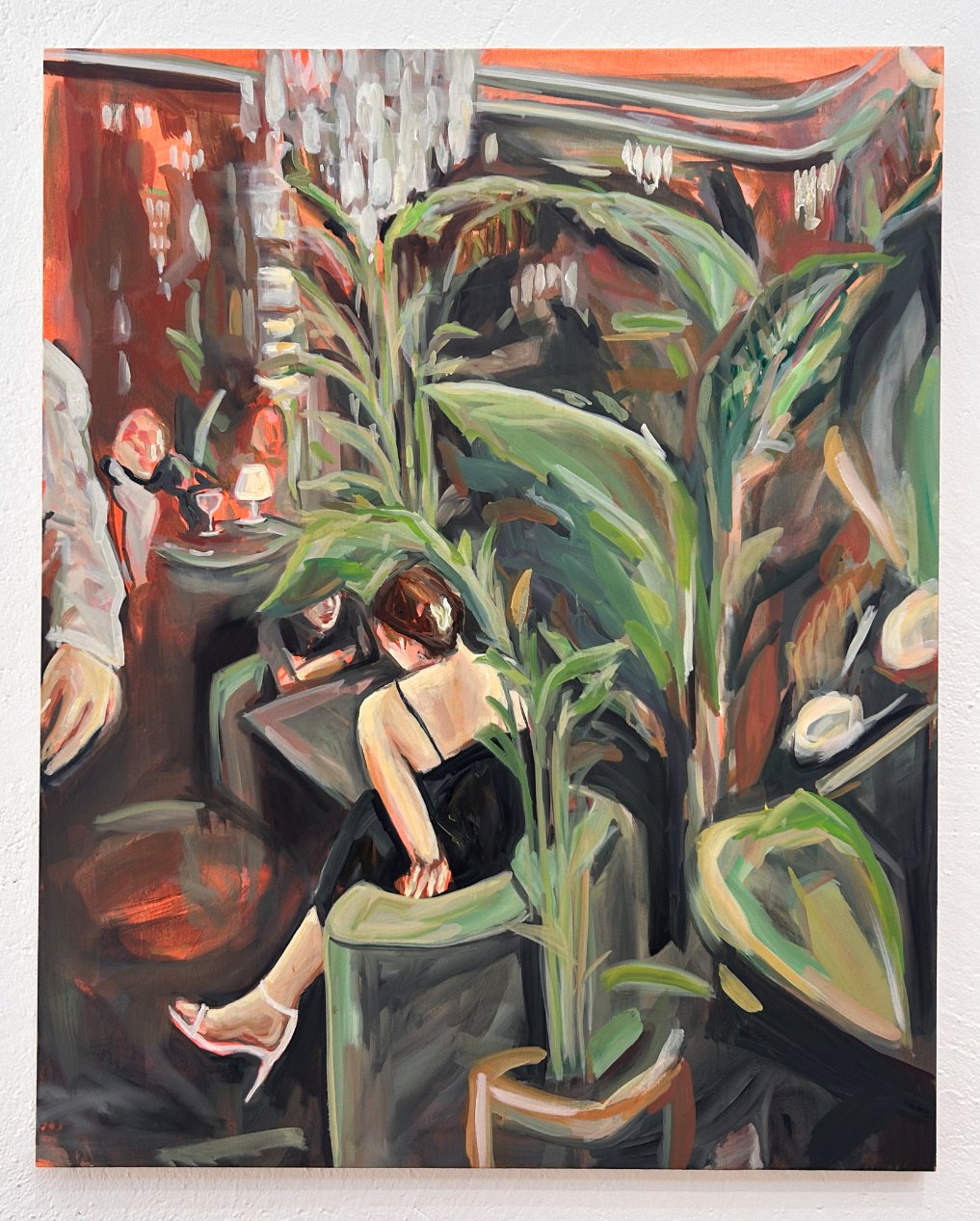
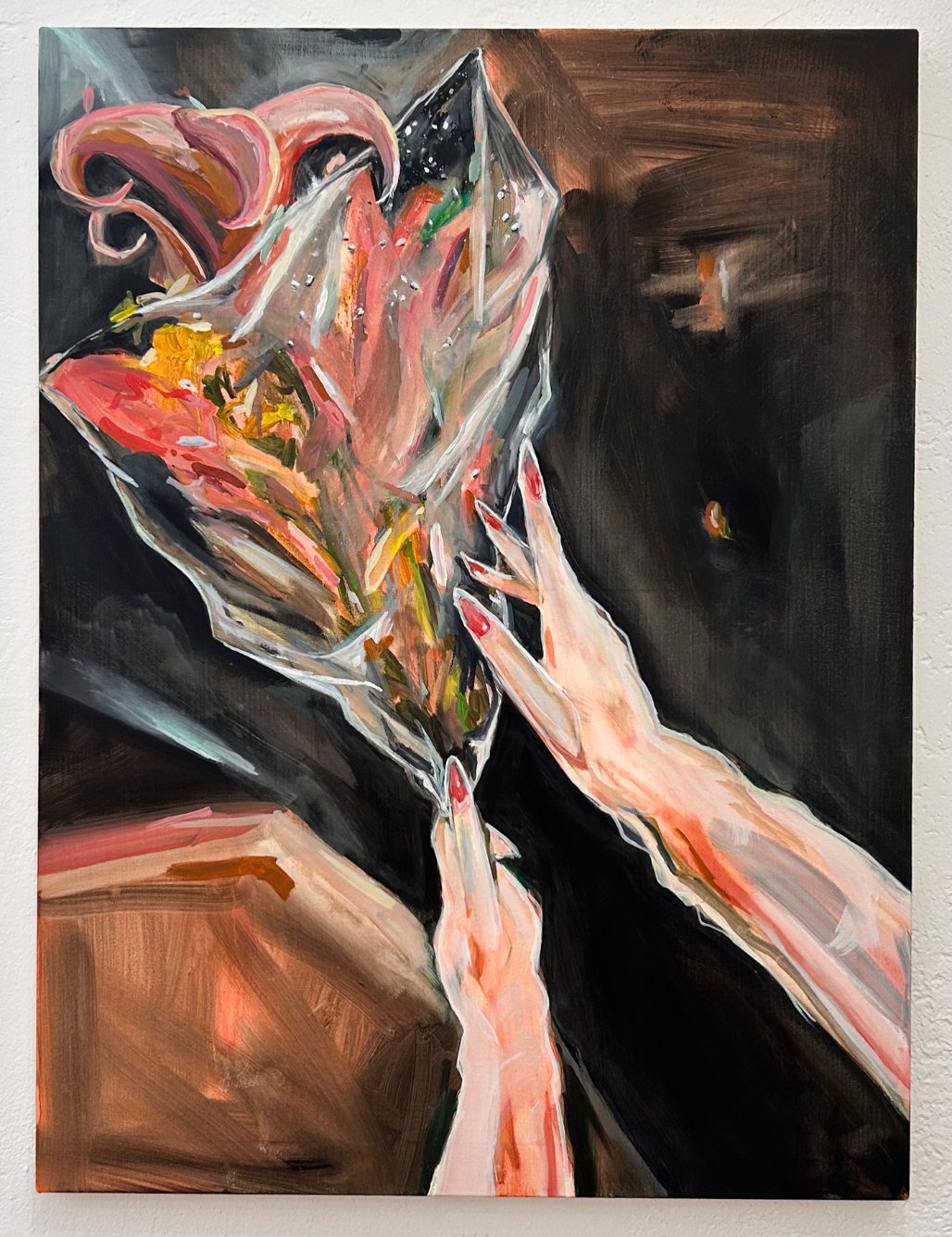


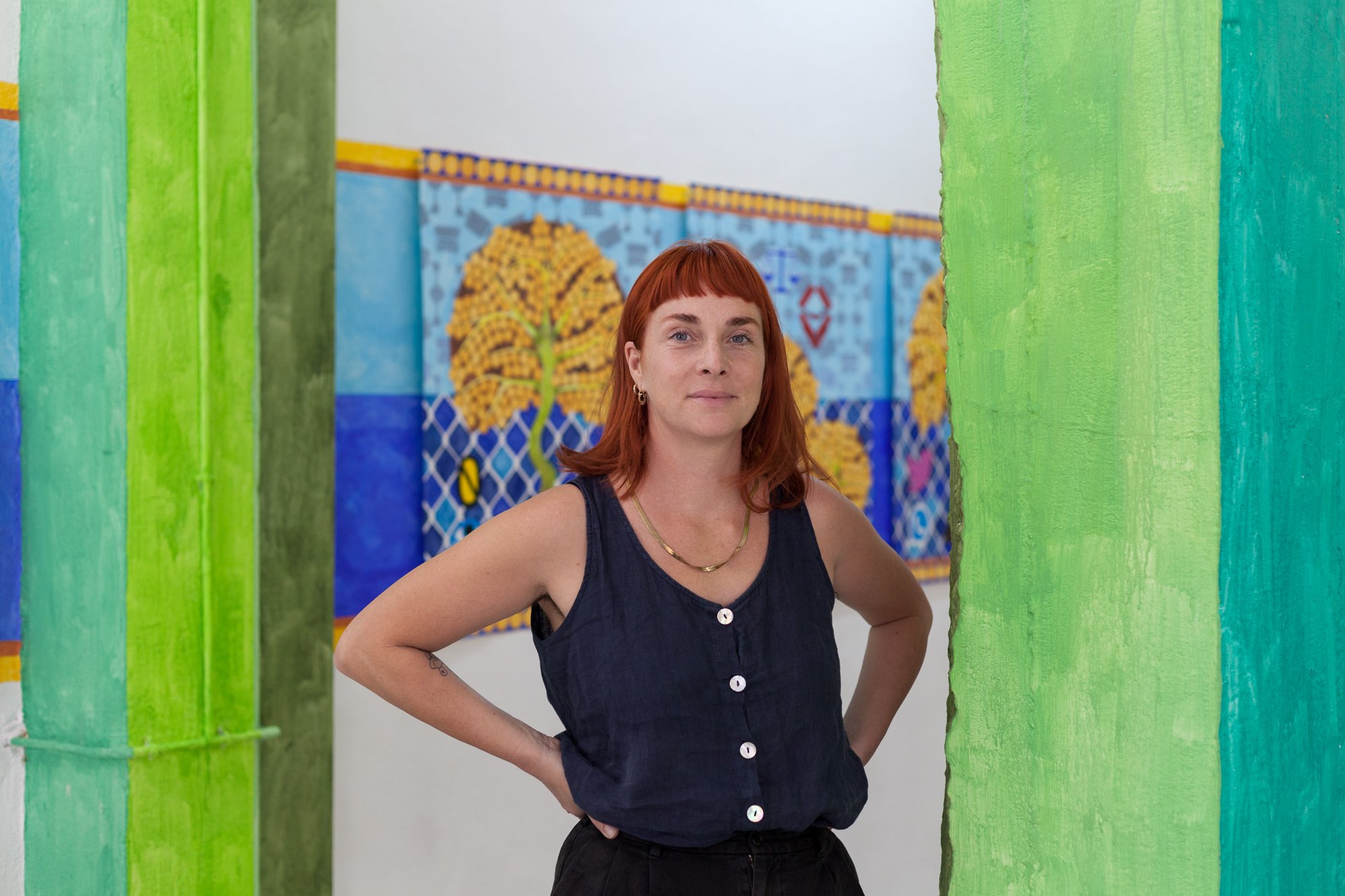
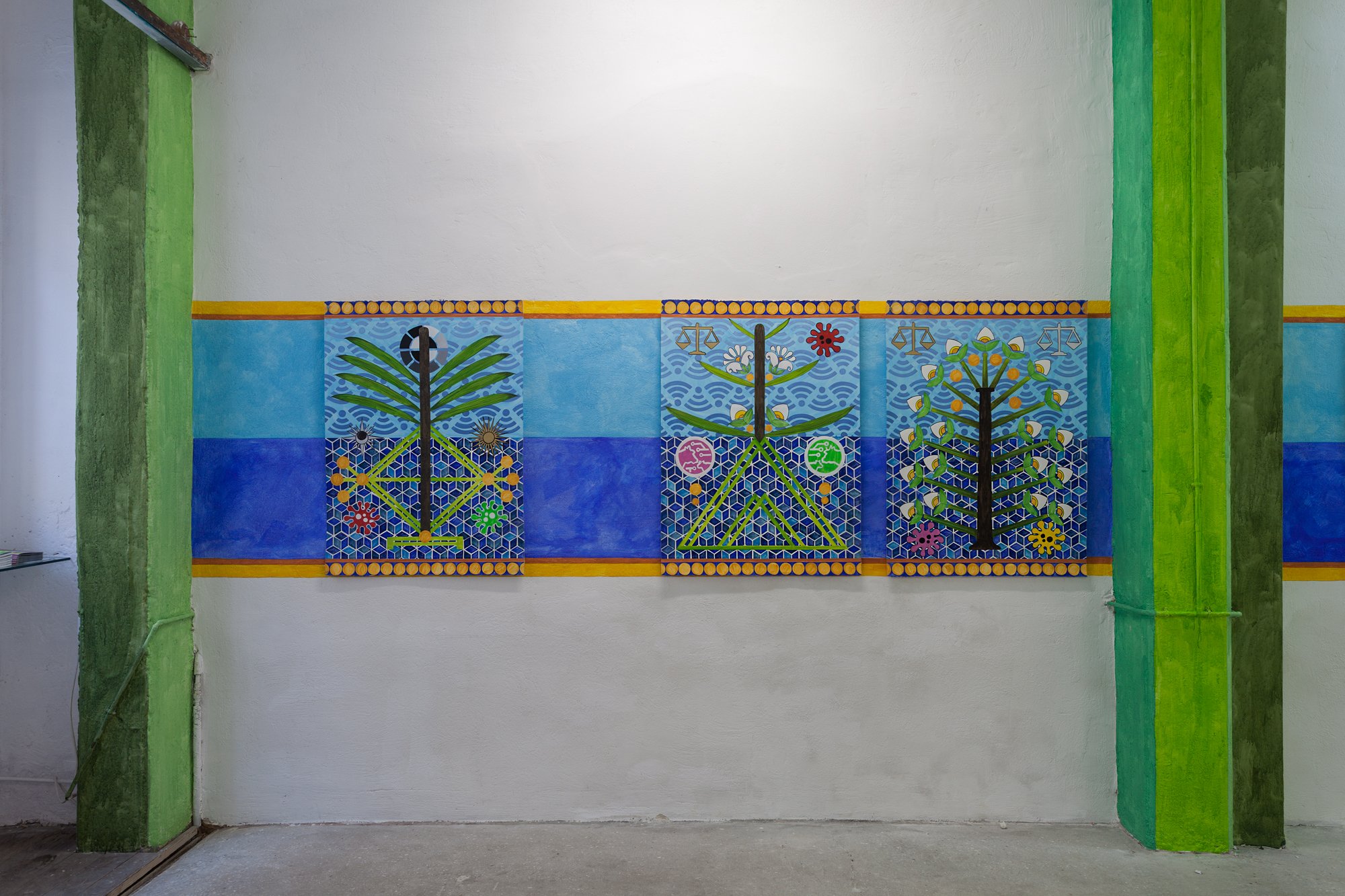



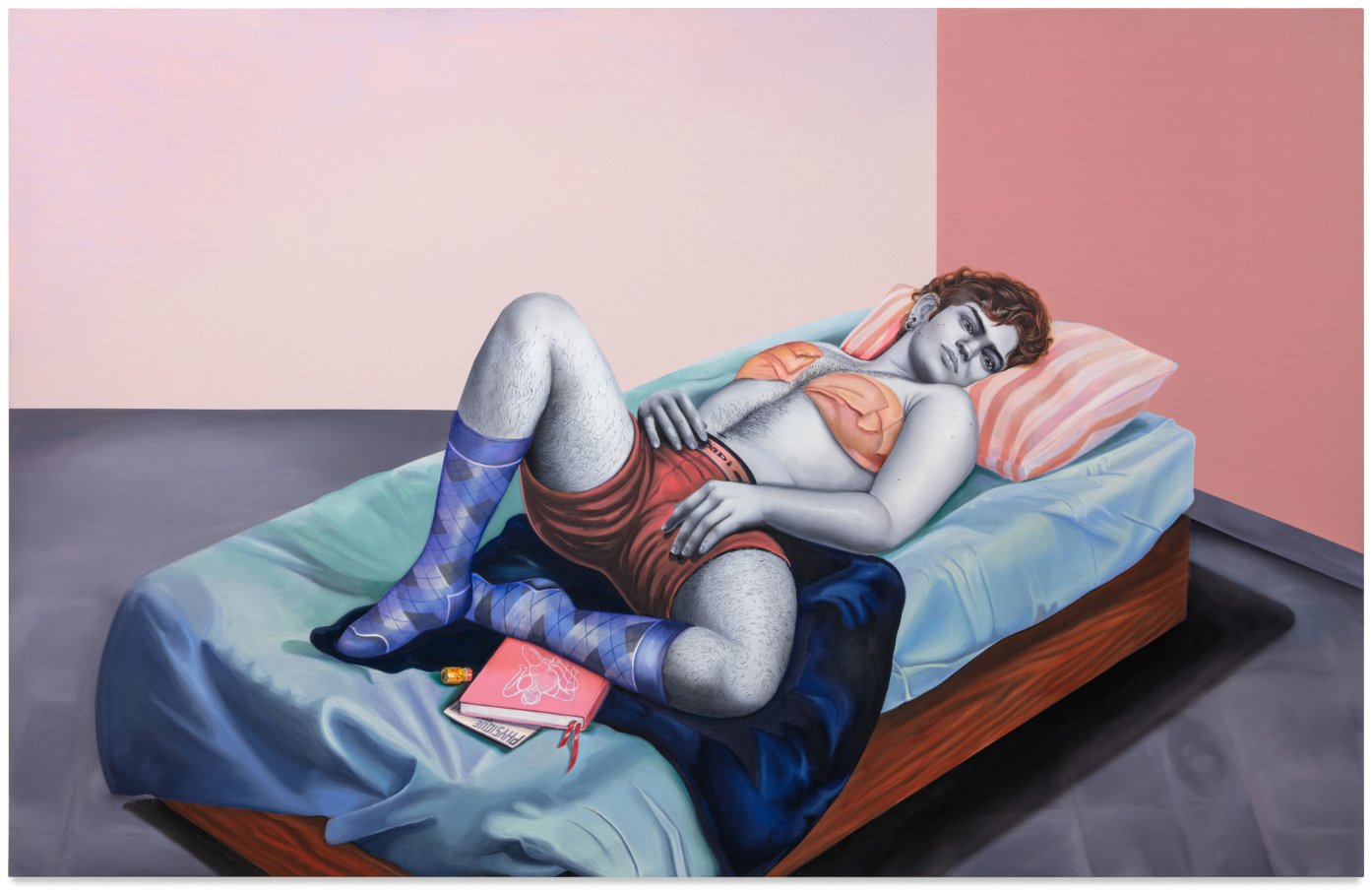
![Alannah Farrell [detail of] X (Pearl Street) 2022 Oil, acrylic, and latex on canvas 78h x 50w in](https://images.squarespace-cdn.com/content/v1/544cb720e4b0f3ba72ee8a78/1664929363203-TJY0DI2ELRJ30BSG7XWM/AFAR011+-+Alannah+Farrell+-+X+%28Pearl+Street%29+04.jpg)
